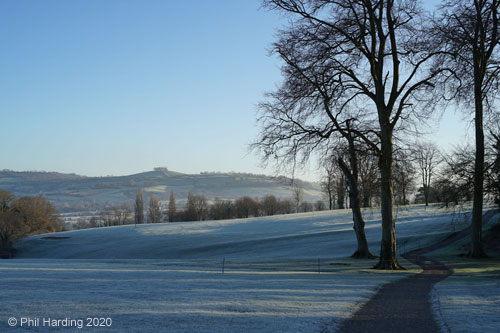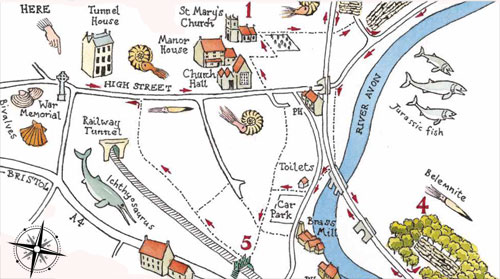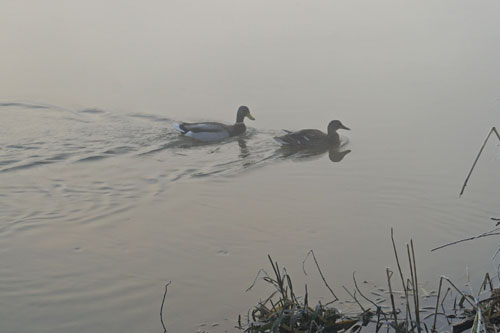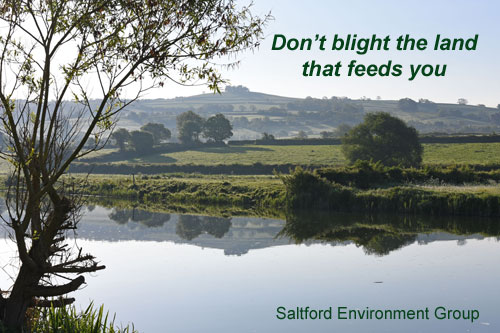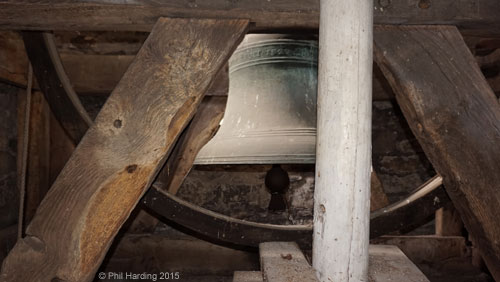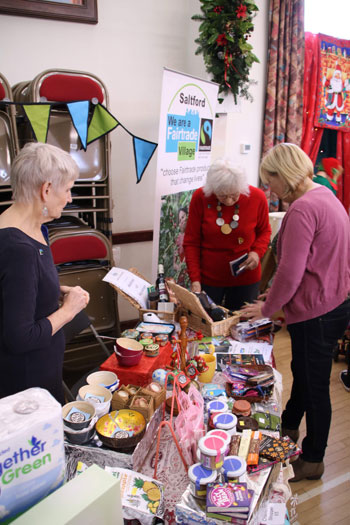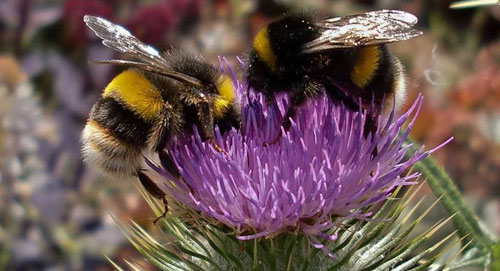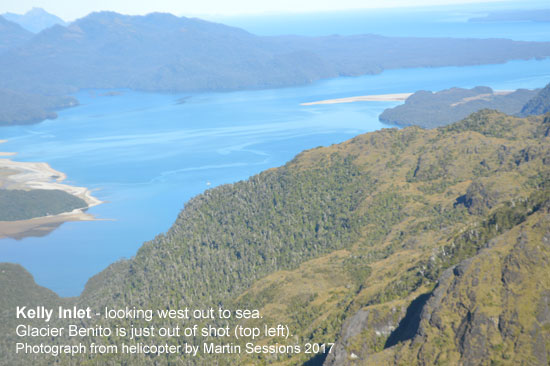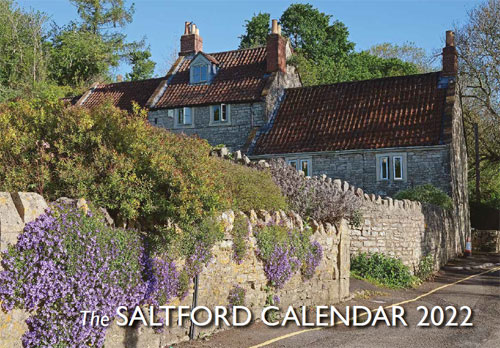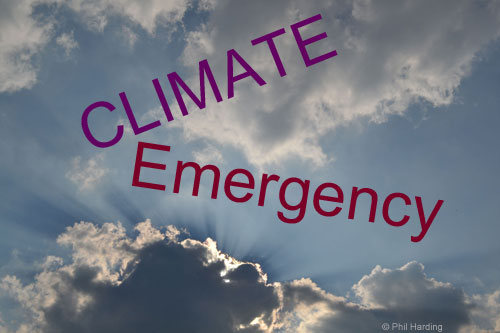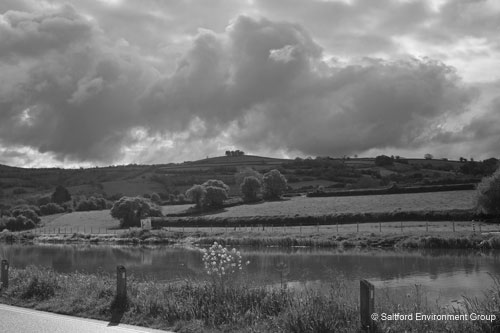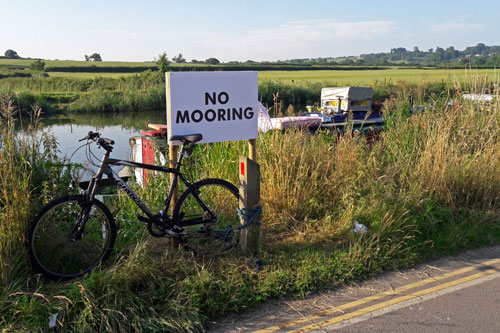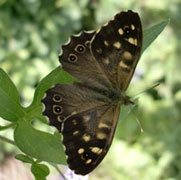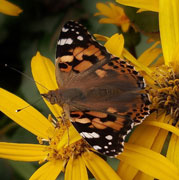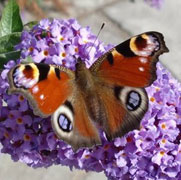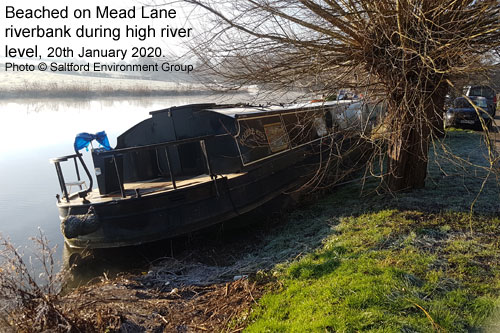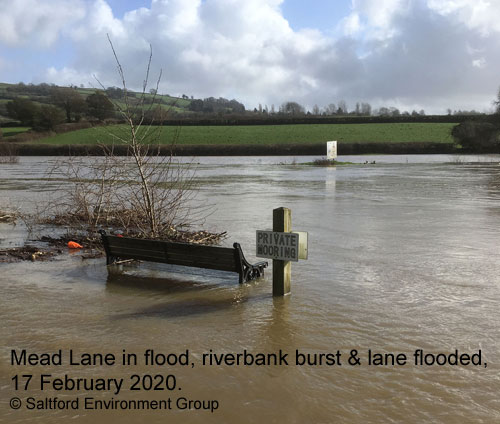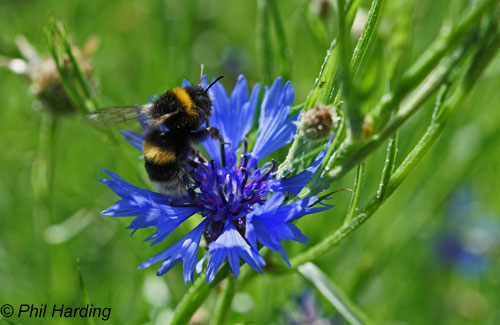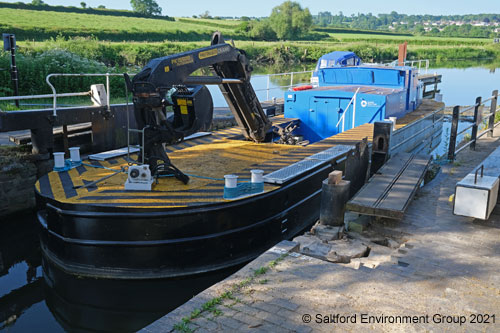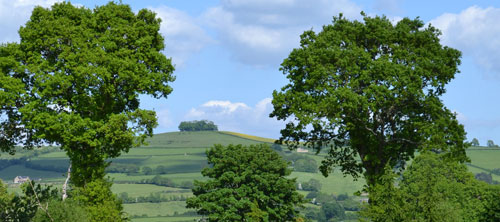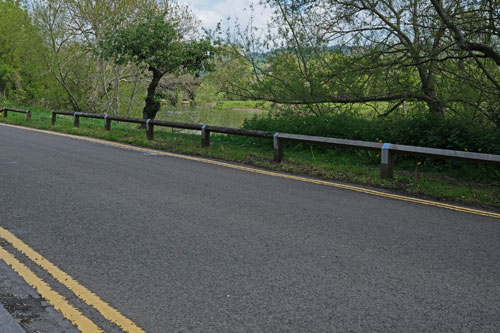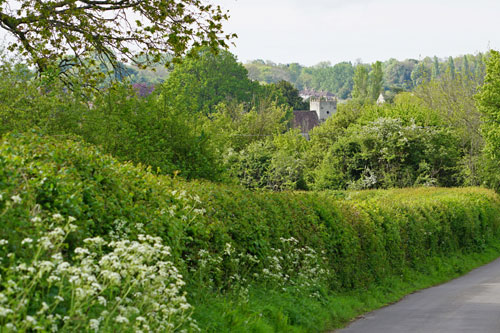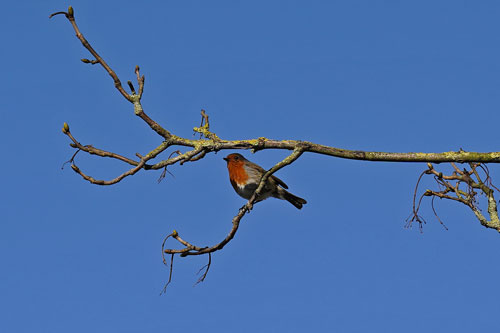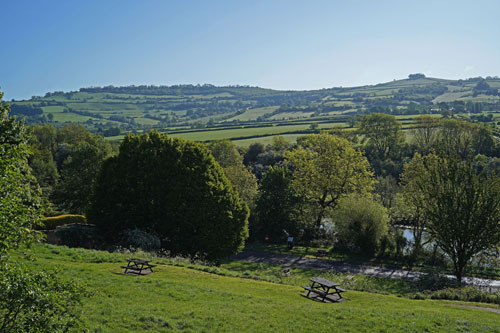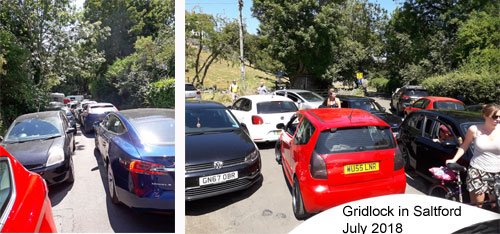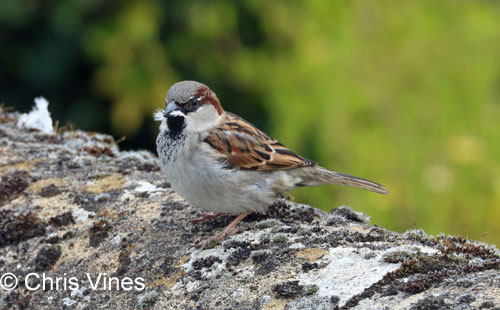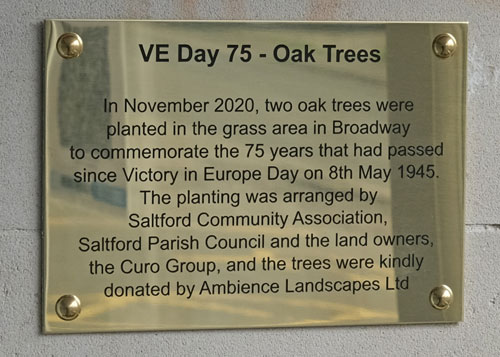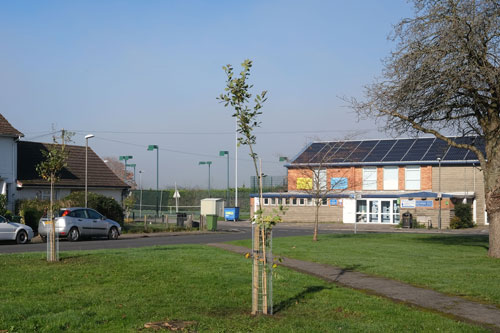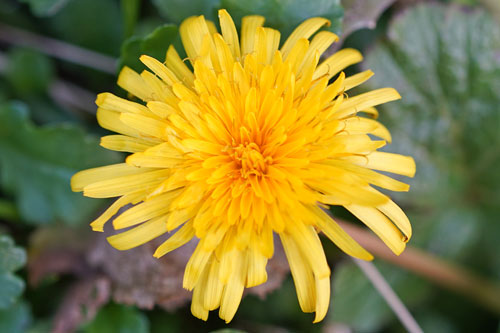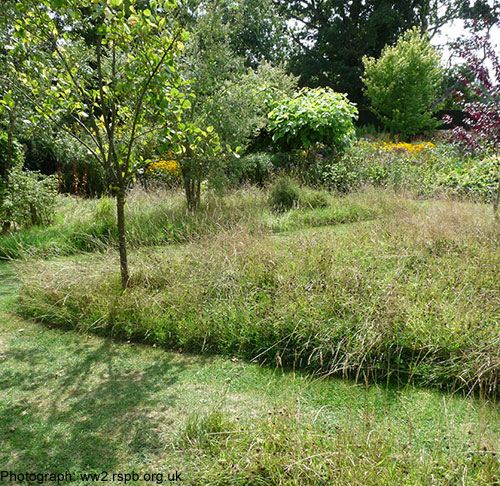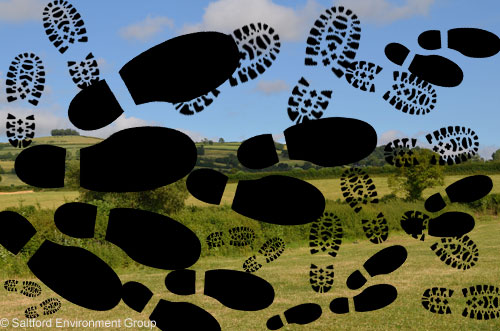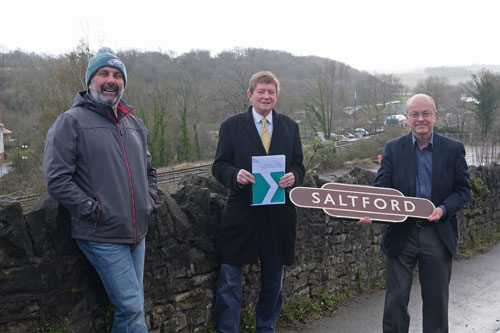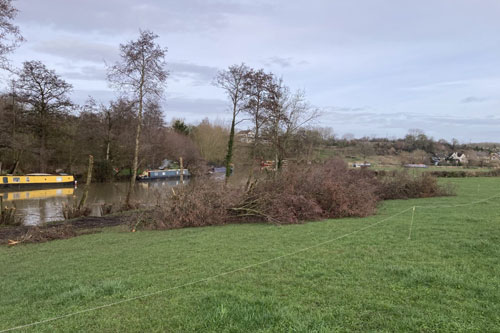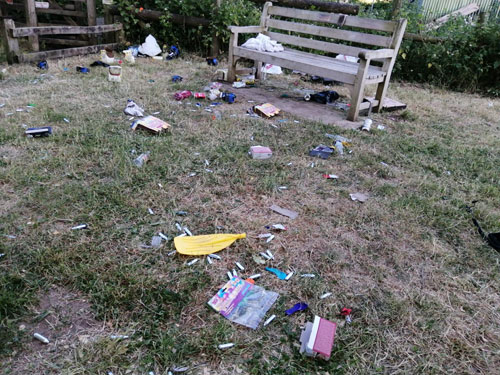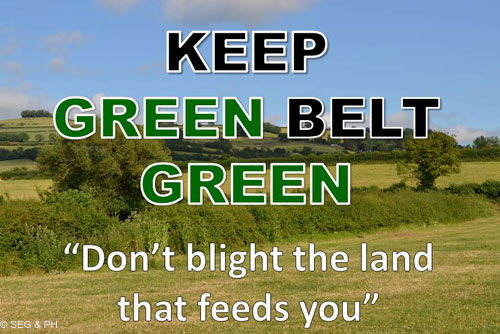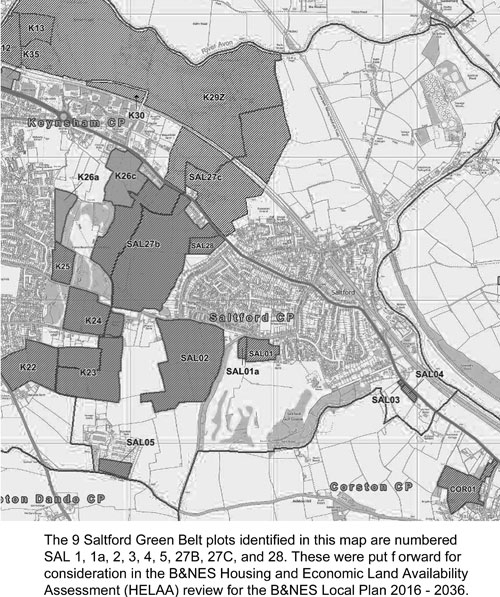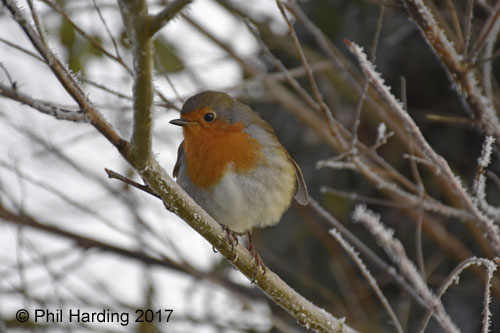|
Saltford Environment Group
|
| Home | About Us | News | Website Contents & Links | Contact |

SEG Home > News List > 2021 News Archive
2021 News ArchiveThe latest stories are on our home page. As this is an archive some older links may no longer connect due to changes in web page URL addresses etc.
An early story in 2021 was about residents' access to the parkland at Saltford Golf Club for recreational walks during lockdown. Click on each story link or scroll down the page (most recent appears first):-December 2021WECA bid to government re. Saltford Station unsuccessful Walking through Saltford's Geological Past - NEW Guide B&NES Council refuses commercial development between Saltford and Keynsham B&NES Council approves Wessex Water's new access bridge and wetland habitat in Saltford November 2021England's brown field land can take 1.3 million new homes latest report shows COP26 outcome - more needs to be done urgently "All you Seed Is Love" - Saltford Wildflower Project October 2021Support for home energy improvements COP26: St Mary's church bell gives climate warning Fairtrade Christmas in Saltford Global (& UK) biodiversity is below 'safe limit' Boris says build new homes on brown field sites "not on green fields" Local Green Belt and the B&NES Local Plan Partial Update COP26, Kelly Inlet in southern Chile & Saltford's Admiral Kelly September 2021SPC responds to Bristol to Bath Transport Survey Can EVs help bring down electricity costs? Solar Together West of England - help to install solar panels August 2021Food, nature, money & energy: how our choices affect the climate crisis B&NES Local Plan Partial Update consultation IPCC: We can act on climate change but time is running out July 2021Disruptive climate change is already affecting the UK B&NES installs new NO MOORING signs in Mead Lane Big butterfly count (16 Jul - 8 Aug) Safety concerns as B&NES defers winter mooring ban in Mead Lane June 2021SPC to help brighten Saltford whilst supporting bees Broken Saltford Lock and the winter mooring ban SPC backs Wessex Water's bridge & wetland habitat proposals May 2021Support for Wessex Water's new bridge will help protect the Green Belt Plant a (suitable) Tree for the Jubilee New parking restrictions to help protect riverside access April 2021International Dawn Chorus Day (2 May) Pandemic & research proves need to re-think strategic planning for green spaces Prince Philip (1921-2021) - A champion for the environment 2021 Big Garden Birdwatch results Saltford Parish Council's new "Policy Overview" backed by Ward Councillors SEG responds to Wessex Water's new access bridge & wetland habitat proposals March 2021Green affordable warmth grant extended In praise of the humble Dandelion (& less grass mowing) New community carbon footprinting tool WECA bid to government: Saltford Station Planners asked for space for wildlife & nature Help maintain safe access for Saltford's riverside areas Febuary 2021Environmental Audit Committee & "Growing back better" Saltford Golf Club - public access ends SEG supports the Green Belt - B&NES LPPU January 2021Climate change is a global emergency say 64% in UN poll Help inform transport plans for Bath & surrounding area Saltford Golf Club during lockdown 3 SPC objects to Bristol Airport expansion Big Garden Birdwatch 29 - 31 Jan News stories start here (most recent appears first):-December 2021WECA bid to government re. Saltford Station unsuccessfulDecember 2021 The bid for £50k by the West of England Combined Authority (WECA) to the DfT "restoring your railway" fund to help pay for up-to-date feasibility work on a Saltford Station was unsuccessful. Supportive letters were sent from the leader of B&NES Council and also from the WECA Mayor. There were concerns raised with potential congestion on the line and how a Saltford Station would fit in with wider regional developments. This is very disappointing but SEG's station campaign is waiting news of the next steps from WECA, for example whether WECA is prepared to fully fund the feasibility study itself so as to help ensure the Metro West project can include Saltford in the provision of better rail service availability. Walking through Saltford's Geological Past - NEW GuideDecember 2021
A circular geology trail walking guide has been produced in 2021 for Saltford so that residents and visitors can explore the local geology for themselves. Produced by SEG member, field naturalist and geologist Simon Carpenter and supported by the Geologists' Association Curry Fund, the descriptive walking guide is available as a downloadable pdf or a handy full colour printed guide from Saltford Heritage Centre - see SEG's Walks of Saltford page or SEG's Geology page to obtain your copy. B&NES Council refuses commercial development between Saltford and KeynshamDecember 2021 On 15th December 2021 B&NES Council's Planning Committee REFUSED planning permission for outline application 20/02479/OUT for up to 5,950sqm of flexible use commercial development with primary access onto the A4 Bath Road submitted by Places for People Strategic Land. This was despite the planning officer's recommendation to permit the application. In addition to strong objections to the proposed development from Keynsham Town Council, Saltford Parish Council and SEG, there were 147 objections submitted by third parties. The text of SEG's objection comment can be found in our 2020 News Archive for August 2020:- "SEG against more congestion on A4". The reasons for the refusal were given in the Decision Notice (dated 16.12.2021) as follows:- 1. Comprehensive masterplan and direct access The application is not accompanied by a comprehensive masterplan that has been subject to public consultation, does not meet the requirements of policy KE3a(3) and does not include direct highway access from Pixash Lane (via Worlds End Lane). The proposals therefore do not demonstrate a comprehensive approach to the development of the allocated employment land and do not ensure that that development is well integrated with neighbouring areas. The proposals are therefore contrary to the development plan, in particular policy KE3a of the Bath and North East Somerset Placemaking Plan. 2. Highways safety The proposed access onto the A4 Bath Road would result in vehicles egressing the site experiencing excessive delays. Given the average length of delay, drivers would be likely to make unsafe manoeuvers onto a busy Class A road to the detriment of highways safety. The proposals are therefore contrary to the development plan, in particular policy ST7 of the Bath and North East Somerset Placemaking Plan. B&NES Council approves Wessex Water's new access bridge and wetland habitat in SaltfordDecember 2021
We are pleased to report that following Saltford Parish Council's and SEG's support responses for Wessex Water's planning application (reference 21/02322/FUL) to build a new access bridge and wetland habitat to facilitate a new permanent and more sustainable access route from the A431 into their sewage treatment and water recycling works in Mead Lane, B&NES Council approved the application on 15th December 2021. The work is required is to facilitate construction work to enable the site to meet tighter regulations, which will improve river water quality, and to accommodate projected growth within Bath and the surrounding area. Site access via Saltford's Norman Road, High Street and Mead Lane for large lorries and tankers to the site has been problematic for many years as these are narrow residential roads, and single track without footpaths along several lengths. The three main reasons why SEG supported the planning application were:-
*The Transport Statement by Atkins accompanying the planning application forecasts a post-construction increase in traffic on the A431 of just 1% eastbound and 2% westbound whereas the redistributed traffic impact on Norman Road routing through the High Street and Mead Lane (all residential side-roads) will be a 20% decrease of existing traffic. Having a new wetland habitat in Saltford as part of the project, a habitat no longer present in this part of the Avon floodplain, will be an excellent additional outcome for the natural environment from this project. A net gain for biodiversity! SEG understands that construction will commence in 2022 after compliance with several detailed environmental and other conditions of the planning permission has been met. November 2021England's brown field land can take 1.3 million new homes latest report showsNovember 2021 (updated 7.1.2022)
The latest report from CPRE (also known as the Countryside Charity) "Recycling our land: the state of brownfield report, 2021" on the state of brown field in England has found that this previously developed land could accommodate over 1.3 million new homes - an increase of almost 10% on 2020. But, according to CPRE, the proportion of brownfield plots with planning permission currently is the lowest since records began - down from 53% last year to 44% now. The report gives a South West region available brownfield capacity of 68,081 housing units *(see Note below). Despite recent encouraging words from the government, e.g. the Prime Minister Boris Johnson in October saying "build new homes on brown field sites not on green fields", brown field sites are not being prioritised. That is now clear in the West of England with B&NES Council, for example, proposing to overlook sustainable development principles and build on more green fields (and safeguarded Green Belt land) in the Local Plan partial update rather than trading biodiversity improvements in B&NES with other West of England Local Planning Authorities that have brown field sites more suited to development. The CPRE "Recycling our land" report can be found from this external site (link). *NOTE:
COP26 outcome - more needs to be done urgentlyNovember 2021
The consensus from most commentators including our own Government is that whilst COP26 was significant progress, more needs to be done to avert the crisis of a global warming. The 2030 national emission reduction targets that national governments have submitted put the planet on a highly dangerous trajectory towards warming of 2.4°C by 2100. Although the wording of the final pact was watered down during the final stages of the negotiations, COP26 was the first time reducing fossil fuels has been mentioned in a COP decision. Many participating countries raised their ambition, with over 40 countries committing to phasing out coal-fired power, and over 30 countries and institutions now committing to halt international finance for fossil fuels. Climate change is already causing severe devastation around the world and there is a widely held consensus that significant and urgent action needs to be taken by 2030 to avoid the most disastrous impacts. The Glasgow Climate Pact arising from COP26 asks governments to revisit and strengthen their nationally determined contributions (NDCs) before the end of 2022 to bring these in line with the Paris Agreement's temperature goal of 1.5°C (the Paris Agreement was adopted in December 2015). To try and keep 1.5°C within reach (essential!), governments will need to return to the table with significantly enhanced offers before COP27, which will take place at Sharm El-Sheikh, Egypt, in 2022. What is clear, is that in addition to reducing our carbon footprints radically including moving quickly to less extravagant and resource wasting lifestyles, we will need to become more resilient to the effects of global warming by adapting to climate change. Our climate change page gives advice on climate adaptation relevant to Saltford. SEG through its close links with Saltford Parish Council, B&NES Council and other organisations will continue to encourage low carbon solutions and planning policies that protect and enhance local natural habitats; the ecological emergency will be much worsened and accelerated by climate change and this in turn will rapidly affect global food security - our island nation will not be immune. António Guterres, the UN Secretary-General, in a statement on the conclusion of COP26, said the conference outcome reflected the state of political will in the world today and provided building blocks for progress. "We are in the fight of our lives, and this fight must be won," he said. "Never give up. Never retreat. Keep pushing forward." (External) LINKS:- "All you Seed Is Love" - Saltford Wildflower ProjectNovember 2021
Saltford Parish Council (SPC) launched its 'Saltford Wildflower Project: All You Seed is Love' environmental initiative on 3rd November with financial support from SEG and Saltford's B&NES Council Ward Councillor Alistair Singleton from his Ward Councillors Empowerment Fund. The aim of this SPC project is to support pollinating insects by creating new - or enhancing existing - wildlife habitats throughout the village. These can be at the end of residential roads, in small open spaces, roadside verges, by the river - in fact anywhere that B&NES Council (the landowner) agrees. It is also a great opportunity to brighten up the village and get Saltford blooming! Saltford Parish Council is giving free Beebomb seed balls to Saltford residents to plant in public locations around the village. SPC is also offering free Beebombs to local community groups who have outdoor space. When Beebombs, SPC's chosen wildflower seed provider, heard about SPC's project they offered to double SPC's order for the same price! This means SPC has the capacity to give out enough seed balls to cover 1,200 square metres of land in Saltford. SPC needs residents and local groups to get involved to achieve the aims of this project. Meeting criteria to receive free Beebomb seed balls is straightforward and the details can be found on the SPC website (see link below), but in a nutshell residents first need to sign up to the B&NES Council Neighbourhood Nature Area project - this includes finding out from B&NES if the land you would like to plant seeds on is eligible for free seed balls (and to prevent your wildflowers being mowed down!). Once done, they simply need to show their agreement with B&NES Council to Saltford Parish Council to claim free Beebomb seed balls. If you are a local community group with outside space to plant wildflowers, please email clerk@saltfordparishcouncil.gov.uk with details of your group and how many seed balls you would like (i.e. how many square metres of land you would like to plant wildflowers on). SPC is particularly keen to hear from our naturalists of the future, and welcomes applications from groups that work with children and young people in Saltford. Beebombs for local organisations have been joint funded by SPC and Saltford Environment Group (SEG). SPC received guidance from SEG regarding the type of (native) wildflowers to plant. PROJECT LINKS:-
October 2021Support for home energy improvementsOctober 2021
B&NES residents are being offered an easy way to make their home more energy efficient and support the council's net zero carbon ambitions. Homeowners with a joint household income of less than £30,000 a year, or those receiving income related benefits, could be eligible to apply for grant funded energy efficiency improvements to their property. The home improvements could include solar panels, cavity wall, underfloor, or loft insulation and will help homeowners to reduce their carbon footprint. The scheme is being promoted by B&NES Council's Energy at Home service (EHS link) which provides information and signposting on energy related home improvements and grant and loan schemes. Homeowners can fill out an online application form on the West of England Local Authority Delivery (LAD) scheme website from this link to see if they are eligible. The homes need to have an energy certificate rating of D, E, F or G on the Energy Performance Certificate (EPC) Register. Note: The funding has been allocated from the government's Green Homes Grant - Local Authority Delivery Part 2 scheme (GHG-LAD 2), to improve the energy performance of UK homes. The West of England, which includes Bristol, South Gloucestershire, North Somerset and B&NES, has been allocated £7.5m. City Energy is the delivery partner for the funding in the West of England. COP26: St Mary's church bell gives climate warningOctober 2021
At 6pm on Saturday 30th October, hundreds of church and cathedral bells across the UK rang out as a warning of the climate emergency and as a call for urgent action on climate change on the eve of COP26*. With the kind permission of St Mary's church, SEG rang the village 200-year-old church bell at St Mary's too. In the past and going back centuries, church bells were used to sound an alarm or warning call as they were the best form of urgent mass communication at the time. The single bell in the St Mary's tower pictured above used for the #RingOutForClimate is dated 1820. In 1820 the population of Saltford was c.327 (now over 4,000), Saltford's Admiral Kelly, then Captain Kelly, was bravely rescuing African slaves from Portuguese slave traders as he commanded HMS Pheasant and the West Africa Squadron, and George IV became King of England, Wales, Ireland and Scotland. Dangerous climate change was not an issue 200 years ago in 1820. * (External) LINKS:- Fairtrade Christmas in SaltfordOctober 2021
Christmas is fast approaching, and the Saltford Community Association will be holding their Christmas Market on Saturday 4th December 2021 with doors open at 10am. Once more we will have a Fairtrade stall where we can show you a selection of the enormous range of Fairtrade goods that are available and perhaps inspire you on your quest for that perfect gift as well as helping to make a difference to others. Traidcraft offer an excellent range of Fairtrade products and at Christmas there is an additional range of cards, gifts, decorations, and seasonal foods. Please visit www.traidcraftshop.co.uk or if you would like to use their ordering service to avoid delivery charges, please contact Kath McCarthy on kath.mccarthy@hotmail.co.uk or 01225 344066. Please visit us at the Christmas Market for a friendly chat and enjoy a cup of Fairtrade tea or coffee in the excellent Saltford Hall cafe. Hope to see you there. New members always welcome. See our Fairtrade page for more information about Fairtrade. Global (& UK) biodiversity is below 'safe limit'October 2021
The world's biodiversity has fallen below the 'safe limit', researchers suggest, as habitat destruction and agriculture take their toll on nature. The UK is one of the world's most nature-depleted countries being in the bottom 10% globally and last among the G7 group of nations. Ahead of UN Biodiversity Conference, COP 15, hosted by China, the Natural History Museum in London has launched the Biodiversity Trends Explorer, an online tool that will allow everyone, from members of the public to policymakers, to see how the biodiversity of different regions has changed over time. With an average of just 53% of its native wildlife intact, the UK falls behind countries including the USA and China following widespread destruction of its habitats from the seventeenth to nineteenth centuries. Globally, biodiversity intactness, which represents the proportion of the original number of species in an area that remain and their abundance, is measured at 75%. This is significantly below the 90% average set as the 'safe limit' to maintain the ecological processes such as pollination and nutrient cycling that are vital to our survival. Here in B&NES, the deeply depressing data for the UK's depletion of nature should be a wake-up call to our local politicians and strategic land use planners to ensure the forthcoming Local Plan update does not destroy any further green field sites for development including so-called 'safeguarded' former Green Belt or existing Green Belt land. Getting it right on where new housing is built has never been more important. Green field and Green Belt land should be protected and enhanced not destroyed; such destruction puts our future food security at higher risk. Climate change will further reduce the ability of other nations to continue feeding the UK and its growing population at current rates (60% of our net food consumption!) so the protection of our Green Belt and green fields has to be a national priority. Just days before the Natural History Museum data was revealed, Prime Minister Boris Johnson said, on 6th October, "... you can also see how much room there is to build the homes that young families need in this country. Not on green fields, not just jammed in the South East, but beautiful homes on brown field sites in places where homes make sense." In response to that helpful statement from the PM, on 9th October SEG's Chairman wrote to our MP, Jacob Rees-Mogg, asking him to seek confirmation from the Secretary of State for Levelling Up, Housing and Communities, Michael Gove, that Planning Inspectors will not now permit developers to gain planning permission on appeal for building on green fields and the Green Belt including safeguarded Green Belt land regardless of the state of play with a Local Plan and its ability to deliver housing numbers set by central government. Local communities not developers should determine where new housing developments should be built, so written reassurance from Michael Gove is what we need to ensure B&NES Council is not cowed into surrendering our precious green fields and Green Belt by housing number targets imposed by central Government or the ever present threat that developers will go to appeal if they don't get the planning permission they seek. We are all aware of the need to build new, decent and affordable houses but they have to be in the right places. To see the Natural History Museum announcement click here: Global biodiversity below 'safe limit' (external site). See also our October news stories on planning below:- Don't blight the land that feeds you... Boris says build new homes on brown field sites "not on green fields"October 2021 Addressing the Conservative Party Conference in Manchester on 6th October 2021, Prime Minister Boris Johnson announced his wish that new homes should be built on brown field sites, NOT green field sites. He said: "Build back beaver, I say. Build back beaver. Though the beavers may sometimes build without local authority permission, you can also see how much room there is to build the homes that young families need in this country. Not on green fields, not just jammed in the South East, but beautiful homes on brown field sites in places where homes make sense." - see our previous news item "Local Green Belt and the B&NES Local Plan Partial Update" resisting B&NES Council's plans to build 280 homes on former Green Belt fields at Keynsham east that would appear to be at complete odds with National Government policy. Local Green Belt and the B&NES Local Plan Partial UpdateOctober 2021
On 5th October Saltford Parish Council agreed its response to B&NES Council on the draft Local Plan Partial Update (LPPU) - this update is being made by B&NES Council to take account of the climate and ecological emergencies before a full review of the Local Plan alongside the West of England Combined Authority Spatial Development Strategy (SDS) in 2023. The proposed update from B&NES does not threaten Saltford's Green Belt with development but an additional 280 houses are proposed for the safeguarded former Green Belt land on the east (Saltford) side of Keynsham. It is hard to find anyone who seriously considers this to be a sound way to meet new housing needs. SPC's response to B&NES, which SEG endorsed as a consultee in its own consultation response on 6th October to B&NES Council, contains these key points:- HOUSING LAND SUPPLY (at Keynsham East) The proposal to develop the safeguarded land east of Keynsham is premature and does not take account of the need to respond proactively to the climate and ecological emergencies. A short-sighted "predict and provide" approach to new developments in response to central Government targets is highly questionable and ignores the local need to protect green field and Green Belt land that has the potential to improve our local ecology which in turn is increasingly necessary to underpin local and national future food security. Brownfield sites and the re-purposing of (former) retail sites close to existing low carbon transport routes should be prioritised for development. If B&NES considers it has insufficient brownfield sites then it should apply an "ecological recovery and development land trade" approach with neighbouring local planning authorities in the West of England (WECA) area. This could be by providing biodiversity net gains through improving its existing green field and Green Belt land to allow neighbouring LPAs to use their "excess" of brownfield sites to meet housing targets (based on genuine need, not demand) in exchange for B&NES undertaking the biodiversity improvements. The lack of public green space, i.e. public parks, near where people live needs rectifying as a priority before further new housing developments are built. Developers should be required to fund the cost of providing new green recreational space for new housing otherwise the cost of infrastructure and related day-visitor facilities in the countryside and other green parks/spaces surrounding the development falls to the LPA. A serious omission from the new developments east of Bristol (in Bristol, B&NES and South Glos) in recent years has been the lack of large new public parks with water facilities (e.g. boating lakes) to cater for the recreational needs of the inhabitants of those new homes. The consequence has been several health and safety problems for riverside areas which were occurring increasingly frequently before the easing of the Covid-19 lockdowns; the lockdowns simply highlighted and amplified the problems. Hot and sunny weekends, Bank Holidays and school holidays result in many householders in existing and new developments with small or no gardens justifiably seeking out water-side areas to picnic, party, swim, use paddle boards etc., or simply relax during their visit. Large cities have traditionally been provided with large public parks (e.g. Victoria Park in Bath) but the growing urban sprawl surrounding cities including Bristol and Bath can be a disaster for local communities and wildlife that become local tourist hot spots. The Bristol to Bath River Avon is a Site of Nature Conservation Interest (SNCI). Natural habitats and adjacent local communities, whose own recreational space increasingly becomes a no-go area for locals during periods of hot and sunny weather, require better protection from visitor pressure as inhabitants of new housing developments descend in large numbers on riverside areas along the Avon Valley due to the lack of spacious public parks where they live. The lack of public parks reduces the quality of life for visitors and local communities alike whilst putting wildlife habitats at greater risk. Furthermore, local residential roads near visitor hot spots are blocked as the carrying capacity for parking is greatly exceeded. BIODIVERSITY NET GAIN SPC [& SEG] welcomes the commitments from B&NES Council. As an appropriate response to the ecological emergency, SPC [& SEG] recommends a more ambitious and higher target than 10% Biodiversity Net Gain for developers. Local ecological knowledge and insight, if available (e.g. from an appropriate wildlife NGO), can help optimise gains for each development and therefore is likely to be necessary to calculate an appropriate target for each development. The overarching objective would be to help overcome the biodiversity losses and negative impacts that have resulted from existing developments in the B&NES area that have been permitted in the 2014 Core Strategy as well as in other previous post-war housing and other developments. In any event, the target could helpfully be expressed as a minimum, e.g. "a minimum [15%] Biodiversity Net Gain", to allow for some developments to exceed [15%] where conditions allow. This could encourage and enable greater ambition for biodiversity improvements funded by developers. Work on actually creating the net biodiversity gain should precede not follow the site clearance and building of new developments with opportunities taken to move rare or important species, seed banks etc. from the site being developed first. Due to the climate and ecological emergency the time delay of creating a net biodiversity gain should be factored into calculations. Otherwise, the situation gets worse as climate and ecological tipping points are crossed (e.g., species loss/collapse) before recovery has even started. TRANSPORT If the cumulative effect of new housing developments leading to the current levels of traffic congestion around and within Keynsham and on the A4 corridor between Bristol and Bath had been correctly predicted when the original 2014 Core Strategy and other developments to the east of Bristol and in South Gloucestershire were permitted, it is doubtful that any LPA seeking to protect not reduce the quality of life of residents would have agreed to such negative consequences of that over-development that has evidently occurred. No new housing developments proposed in the LPPU should proceed until the past underestimation of transport infrastructure capacity has been rectified. SPC [& SEG] supports this commitment from B&NES Council that any new developments should be preceded by new transport infrastructure. In view of the above SPC asks that new transport infrastructure requirement after rectification has been completed. New segregated cycle paths should be part of the new transport infrastructure prior to new developments to maximise their use and a transfer away from the car from the outset. It would be unwise to assume that increased home-working as a likely consequence of the Covid-19 pandemic would reduce local travel. An increase in local (short) daytime journeys by car to replace some of the commuting journeys could be a likely outcome until a modern integrated public transport system has been developed and is operating. SPC [& SEG] respectfully reminds B&NES Council that air pollution from traffic is not just restricted to tail pipe emissions (NOx etc.). Air pollution of particulates from tyre wear, brake dust and road surface wear are widely recognised as another consequence of both fossil fuelled vehicles and (often heavier) EVs. However, in recognising the importance of a switch from fossil fuelled road vehicles to EVs, SPC welcomes the commitment by B&NES Council to provide "Fast and Rapid charging facilities to car parks across the district in 2021" as we understand the provision in B&NES to be well behind some other West of England areas. SPC [& SEG] welcomes the positive commitment of B&NES Council to explore the potential for re-opening Saltford Station. This should be on the existing station site for the reasons previously articulated by SPC (and SEG's Saltford Station campaign). SPC [& SEG] supports new segregated cycle paths along the A4 corridor and on connecting routes wherever possible to provide greater safety of cyclists and encourage greener transport. The Keynsham Bypass (A4) and the A4 east of Saltford towards Newbridge and Bath would greatly benefit from dedicated cycle paths. New transport infrastructure where land is lost for that infrastructure should not be immune to meeting the B&NES net gain target for biodiversity. You can download the full text of SPC's response here:- SPC LPPU response 5.10.2021 (pdf opens in new window). Residents, businesses and other stakeholders can have their say on the Local Plan Partial Update by the 8 October deadline - see the B&NES Council LPPU consultation webpage >> COP26, Kelly Inlet in southern Chile & Saltford's Admiral KellyOctober 2021
The United Nations Climate Summit, COP26, to be held in Glasgow between 31 October and 12 November 2021, under the presidency of the UK will bring parties together to accelerate action towards the goals of the Paris Agreement and the UN Framework Convention on Climate Change. The goals of COP26 are :-
The Patagonian Icefields, in southern Chile, which straddle the Andes below 46°S, are two of the most sensitive ice masses on Earth to climate change. Glacier Benito, 47°S, 74°W, is a temperate outlet glacier on the west side of the North Patagonian Icefield. Rates of thinning and ablation (removal by erosion or other processes) have been obtained using data collected by the British Joint Services Expedition in 1972/73 and subsequent data collected in 2007, 2011 and 2017. The main access route to Glacier Benito is from Kelly Inlet and Kelly Harbour, named after Saltford's famous resident Admiral Kelly. Kelly Harbour is immediately south of San Rafael Lake (Laguna), Aysén, Chile. But why was Kelly Inlet and Kelly Harbour named, in 1828, after Admiral (then Captain) B M Kelly?
Kelly Harbour was named by Commander Pringle Stokes of HMS Beagle when Stokes surveyed the Inlet on 25th May 1828. In Stokes' last journal (Mitchell Library, Sydney, Australia) Stokes says "In the next page, I have given a full account and a sketched plan of this Harbour which I have called Kelly's Harbour, after a friend and brother officer, Captain B M Kelly, RN. To Captain Kelly, I am indebted for my introduction to the leader of the expedition, Captain P P King, RN, FRS". Unfortunately, Commander Pringle Stokes found the task of surveying this part of Chile in mid-winter incredibly challenging (as it would have been for anyone) and took his life soon afterwards in August 1828. That tragedy triggered an interesting sequence of events. Captain P P King, in command of the surveying expedition, wanted to promote Lieutenant Skyring (Stokes' able surveyor) to command HMS Beagle, a Cherokee-class 10-gun brig-sloop of the Royal Navy. However, he was overruled by Rear Admiral Sir Robert Waller Otway who appointed Lieutenant Robert Fitz-Roy, on his staff instead. Fitz-Roy wanted a person with a similar mind to accompany him on his voyages so selected recently graduated and now famous naturalist, geologist and biologist, Charles Darwin (1809 - 1882) best known for his contributions to the science of evolution. Darwin's first voyage on HMS Beagle, the ship's second survey expedition voyage, began on 27 December 1831 and lasted almost five years. As HMS Beagle surveyed the coasts of South America, Darwin theorised about geology and the extinction of giant mammals. Acknowledgement Martin Sessions (ex-Royal Navy) from Canberra, Australia contacted SEG's Chairman Phil Harding in September 2021 with information about the link between Admiral (Captain) Kelly, Kelly Inlet, HMS Beagle and Charles Darwin. SEG is grateful to Martin Sessions who has participated in and led expeditions to Glacier Benito (via Kelly Inlet) since 1972 examining and reporting on its condition. In 1971, Martin Sessions was selected as a member of the 1972/73 British Joint Services Expedition to Chilean Patagonia led by Crispin Agnew. His tasks were to undertake the glacier and weather studies of the expedition. The expedition's base camp was in Kelly Inlet (Abra Kelly). Professor Otto Nordenskjold with Hugo Pallin and others had made Kelly Inlet their base in their 1921/22 expedition. Glacier Benito appeared to be the best glacier to study in the area. It had its own basin, was of a significant size and was accessible from Kelly Inlet. Further information about those expeditions can be found at www.glaciar-benito.cl. Information about Admiral Kelly (naval officer, liberator of slaves, and benefactor) can be found on SEG's History of Saltford project web page about him from this link:- Admiral Kelly where this information about Kelly Inlet is also published. Link to COP26 website: ukcop26.org September 2021SPC responds to Bristol to Bath Transport SurveySeptember 2021 The West of England Combined Authority (WECA) has been engaging local residents on plans to provide better and more sustainable transport between Bath and Bristol - to help people move around more easily, reduce congestion, lower carbon emissions and improve the environment. This is a partnership consultation with B&NES Council and Bristol City Council. The deadline for responses was 10th September. The following are extracts from Saltford Parish Council's response agreed at its monthly public meeting on 7th September:- Saltford Parish Council considers that any strategy Planning related to a Bristol to Bath Bristol Transport Corridor must take fully into account the capacity of the roadways that are part of this strategically important route. Any Highway capacity limitations need to be clearly identified and resolved by Local and National Government working together to find transport solutions to these existing and future traffic load constraints. Saltford Parish Council is concerned and therefore highlights the limited traffic capacity of the A4 from the Globe roundabout to Saltford and then through Saltford to the Broadmead roundabout. This single carriageway section of the A4 reaches capacity during rush hour. We consider that the congestion along this section of the A4 will also worsen as a result of the large number of Commercial and Housing developments completed and planned that will feed transport on to this section of the A4. Given the existing restriction of capacity and road size of the A4 through Saltford no plan to improve Mass Transit along this strategic important transport corridor should be considered without effective strategic plans to remove some of the traffic volume from the A4 by using alternative existing transport corridors between the two cities. Most significant is the Great Western Railway which travels through Saltford to both Bath and Bristol. Here the original station site is on the A4 and could be developed. Additionally, there is the Bath Bristol Railway Path. Originally this railway line had two tracks and has the width for possible additional development. The full SPC response can be found in "News" on SPC's website. Can EVs help bring down electricity costs?September 2021 Launching Ofgem's strategy on Electric Vehicles (EVs) on 4th September, Neil Kenward, Ofgem's Director of Strategy and Decarbonisation, said: "Electric vehicles will revolutionise the way we use energy and provide consumers with new opportunities, through smart products, to engage in the energy market to keep their costs as low as possible. Our electric vehicle priorities not only provide a way to meet our climate change targets but importantly offers ways to protect consumers from rising bills, through a three-prong approach of increased use of electric vehicles, smart charging and vehicle-to-grid technology which together can help drive down costs for all GB bill payers." Ofgem set out how it will support the rollout of electric vehicles (EVs) in Britain, ensuring that the infrastructure and technology is in place for the rapidly growing number of EVs on the road, with an estimated 14 million by 2030. This will include:
Ofgem is Great Britain's independent energy regulator. Ofgem's website is at www.ofgem.gov.uk. Solar Together West of England - help to install solar panelsSeptember 2021 'Solar Together West of England' is a group-buying scheme that offers homeowners and businesses the chance to generate their own clean electricity at a highly competitive price. There is an option to add battery storage too. Owners of community buildings and small business premises are also able to join the scheme. This innovative new group-buying programme offers you several advantages over 'going it alone' with transferring to solar power:
This scheme is being delivered in partnership with the West of England Combined Authority (WECA), and their partner iChoosr Ltd, who are independent experts in group-buying. Find out how you could save money and the environment - register for free by 28 September via this B&NES Council web page link: Solar Together. 'Solar Together West of England' is suitable for those who own their own homes/buildings and can afford to install these measures themselves. For residents on lower incomes or living in poorly performing homes, there is support and information available through B&NES Council's Energy at Home website. Saltford Calendar 2022September 2021
The Saltford Calendar 2022 featuring some stunning photographs by local photographers is now available from Saltford Post Office* at £7 each. As in previous years the calendar has been produced by Saltford Community Association and Saltford Environment Group. All net proceeds will be split between SCA, SEG and the Saltford Community Library and Post Office to help further their work supporting the community. By purchasing your copy or copies (it makes a great gift!) you are helping support the community, including helping to keep the Post Office open, whilst celebrating the village and its rural setting. *Saltford Post Office is open 9am - 1pm & 2pm - 5pm on Monday to Friday, closed on Thursday, and also open Saturday 9am - 12 noon. Climate change - what it means to Fairtrade farmers and how Fairtrade are responding to their needsSeptember 2021 As Part of The Great Big Green Week - Churches Together, Eco Festival on 18th September - Keynsham Market Walk/The Space, 10am - 3pm, the Saltford and Keynsham Fairtrade Groups are sharing a stall. Do come along to find out more about Fairtrade and their part in helping struggling farmers cope with climate change. FACTS - QUOTED FROM TRAIDCRAFT The cocoa industry is a turbulent sector, where poverty and child labour are still commonplace and a living income - enough for a decent standard of living, or £1.86 per day - is reserved for just a few farmers. For cocoa producers, it's a constant battle dealing with the effects of adverse weather conditions brought on by climate change and volatile cocoa prices. HELP IS AT HAND - QUOTE FROM THE FAIRTRADE FOUNDATION Environmental protection is a key element of Fairtrade's view of sustainability. Fairtrade Standards require smallholder farmer and larger hired labour production set-ups to comply in key areas. The Standards also promote training for farmers, which can include advice on switching to environmentally friendly practices. This has been shown to lead to good agricultural practices, which have encouraged environmentally sustainable production. The Standards also guide producers in adapting to climate change and mitigate their immediate needs. More than ever, they need a fair price for their crops and their hard work. SO WHY BUY FAIRTRADE? If you think feeding your family, educating your children and caring for your community and ultimately the planet is good for you then please buy Fairtrade and Traidcraft when choosing your tea, coffee, chocolate, sugar and bananas along with the many other products. No farmer should have to work so hard and not be able to feed their family and educate their children. Saltford Fairtrade Group August 2021Food, nature, money & energy: how our choices affect the climate crisisAugust 2021
Come along to The Space in Keynsham BS31 1FS on Friday 17th September 2021 and hear from four experts on how as individuals, and collectively, we can help to tackle climate change - the biggest threat facing us today. This event has been organised by Churches Together for Keynsham EcoFest 2021. Food, energy, money and the services provided by the natural world are the cornerstones of a fully functioning society. We all eat, heat our homes, earn and spend money, and interact with nature. This gives us huge power to affect the outcome of the climate crisis - through our individual choices, by influencing business and by exercising our democratic rights to ensure that our government takes action, including at an international level. This is especially important as the UK is the chair of COP26, which is the world's last best chance to avoid catastrophic global heating. The audience will be hearing from four experts about what we can do as individuals to help avert catastrophic global heating, and what businesses and our government can do to avoid the terrible consequences of climate change, including an increase in extreme droughts, fires and flooding. FOOD Jo Lewis - Head of Food & Farming, the Soil Association
After hearing from the speakers, there will be a panel debate, with questions from the audience, chaired by Rev. Mike Burke. Tickets are £5. Please book here:- keynshamtickets. Covid-19 may mean the organisers have to restrict numbers in The Space, or move the event online. B&NES Local Plan Partial Update consultationAugust 2021 B&NES Council will run a consultation from 27th August to 8th October 2021 on proposed changes to the current Bath and North East Somerset Local Plan to ensure that planning policies better reflect the council's Declaration of Climate and Ecological Emergencies and commitment to securing net zero by 2030. B&NES Council says that the aim of the changes is primarily to meet three key priorities; to enable greater energy efficiency of existing buildings and zero carbon new build; a shift to mass transport, walking and cycling to reduce transport emissions; and a rapid, large-scale increase in local renewable energy generation. SEG's principle concern is protection of the Green Belt from development which is necessary for meeting the twin challenges of the Ecological Emergency and impacts on that emergency from Climate Change. SEG is therefore concerned that the proposals include 210 new houses on safeguarded (former Green Belt) land at East Keynsham is inappropriate when compared to other more sustainable means of meeting housing need (not demand). SEG will respond to the consultation and publish details of that response on our website after the consultation is launched. The press release about the Local Plan Partial Update can be found from this link:- B&NES - LPPU. IPCC: We can act on climate change but time is running outAugust 2021
Climate changes are occurring in every region and globally, according to the latest UN Intergovernmental Panel on Climate Change (IPCC) report. As the world's latest and most rigorous scientific assessment of the physical basis of climate change published on 9th August, the report defines changes that are unprecedented in thousands if not hundreds of thousands of years. It emphasizes that there is still time to act, but it must happen immediately. Strong and sustained reductions in emissions of carbon dioxide (CO2) and other greenhouse gases would limit climate change. While benefits for air quality would come quickly, it could take 20-30 years to see global temperatures stabilize, according to the IPCC Working Group I report, "Climate Change 2021: the Physical Science Basis". The Working Group I report is the first instalment of the IPCC's Sixth Assessment Report (AR6), which will be completed in 2022. The report provides new estimates of the chances of crossing the global warming level of 1.5degC in the next decades, and finds that unless there are immediate, rapid and large-scale reductions in greenhouse gas emissions, limiting warming to close to 1.5degC or even 2degC will be beyond reach. The report projects that in the coming decades climate changes will increase in all regions. For 1.5degC of global warming, there will be increasing heat waves, longer warm seasons and shorter cold seasons. At 2degC of global warming, heat extremes would more often reach critical tolerance thresholds for agriculture and health, the report shows. But it is not just about temperature. Climate change is bringing multiple different changes in different regions - which will all increase with further warming. These include changes to wetness and dryness, to winds, snow and ice, coastal areas and oceans. Coastal areas will see continued sea level rise throughout the 21st century, contributing to more frequent and severe coastal flooding in low-lying areas and coastal erosion. The report also shows that human actions still have the potential to determine the future course of climate. The evidence is clear that carbon dioxide (CO2) is the main driver of climate change, even as other greenhouse gases and air pollutants also affect the climate. "Stabilizing the climate will require strong, rapid, and sustained reductions in greenhouse gas emissions, and reaching net zero CO2 emissions. Limiting other greenhouse gases and air pollutants, especially methane, could have benefits both for health and the climate," said IPCC Working Group I Co-Chair Panmao Zhai. NOTE:
July 2021Disruptive climate change is already affecting the UKJuly 2021
Extreme weather events arising from climate change that are increasingly affecting the UK, specifically increased rainfall, sunshine, and temperatures, and have been predicted by scientists for several decades, are here now. The "State of the UK Climate 2020" report from the Royal Meteorological Society using Met Office data states that the year 2020 was the 3rd warmest, 5th wettest and 8th sunniest on record. The report provides an authoritative and up-to-date assessment of UK climate trends, variations and extremes based on the most up to date observational datasets of climate quality. The report also states that:
How can we here in Saltford adapt and be more resilient to these climate change impacts? Check out our Climate Change page where we provide tips that householders and local businesses can take including tips from the Environment Agency for making properties better prepared for flooding. NOTE:
B&NES installs new NO MOORING signs in Mead LaneJuly 2021
During July B&NES Council installed additional and more prominent new NO MOORING signs in the "No Mooring" zone at the east end of Mead Lane. As can be seen from the example photograph taken a few days later, the signs were not having an immediate effect. This area was originally a 48-hour mooring zone but in October 2020 B&NES decided to make this a NO MOORING zone on a permanent basis, so that this part of the riverbank can be reallocated as open space (a green space) for other leisure purposes by the general public visiting Mead Lane. 14-day moorings remain further down Mead Lane, in a sign posted area, for the present time. B&NES Council has an ambition to remove moorings from Mead Lane by the end of 2022 and will review moorings in Mead Lane before then. Big butterfly count (16 Jul - 8 Aug)July 2021
The Big Butterfly Count is a UK-wide survey aimed at helping us assess the health of our environment simply by counting the amount and type of butterflies (and some day-flying moths) we see. This year's big butterfly count is from 16 July to 8 August and could be something to also get younger members of the family engaged in over the summer holidays. Participants choose a place to spot butterflies and moths. Watch for 15 minutes. Then record which species they see. There's even a free smartphone app for the big butterfly count so that you can carry out and submit your count all in one go while out and about watching butterflies. Details at www.bigbutterflycount.org. To coincide with this year's big butterfly count SEG has updated its wildlife page so that it now has photographs of all 25 butterflies that occur and have been observed in Saltford in recent years - see wildlife page - butterflies. Safety concerns as B&NES defers winter mooring ban in Mead LaneJuly 2021
Following a Judicial Review challenge by Community Law Partnership (CLP) on behalf of a liveaboard boater concerning the way the B&NES Cabinet resolved on 8 October 2020 to close the 14-day moorings during winter months a decision has been made by the Cabinet member for Neighbourhood Services Cllr David Wood in consultation with the Director of Environment to defer the decision to close the winter moorings. It is not yet known when B&NES Council will review moorings in Mead Lane but it has an ambition to end moorings in Mead Lane by the end of 2022. This decision to end the winter mooring ban will be of concern to those boaters who have visited Mead Lane in the winter months and Saltford residents who are well aware of the dangers of winter flooding in Mead Lane (see photographs from January and February 2020) and the high river flow rates at times, usually in autumn and winter, when the river is in spate after prolonged rainfall. The flow rates have previously caused considerable erosion in Mead Lane, hence the riverbank repairs and bio-engineered stabilisation works by B&NES Council in 2005 which it then overlooked when the Council encouraged moorings in Mead Lane for a mooring trial during 2017 and 2018. The trial came about after moorings started to occur in Mead Lane from 2015 when boats first started to moor there due to a loss of moorings in Bath and other factors. Furthermore, the Canal and River Trust (CRT) has continued to issue more continuous cruising licences despite the lack of facilities on the Kennet & Avon Canal and River Avon. Climate change is already widely acknowledged to be increasing the frequency of severe and prolonged rainstorms, you only need to see the news reports of the present devastating floods in Western Europe to recognise this - and those are summer rainstorms. This decision to defer the winter mooring ban therefore raises questions over B&NES Council's commitment to its own declaration of a climate emergency. Adapting to climate change so that communities, including the liveaboard community, are more resilient and less vulnerable to climate change and extreme weather events surely has to be an urgent priority. Safe moorings in appropriate locations that are safe all year round needs to be part of how Local Councils with riparian ownership on navigable rivers respond to climate change impacts. June 2021SPC to help brighten Saltford whilst supporting beesJuly 2021
At its meeting on 6th July Saltford Parish Council agreed in principle to develop an environmental project to create wildflower public spaces using seedballs with the aim of enhancing Saltford's green spaces for the enjoyment of all, whilst supporting pollinating insects. Details and delivery of the project will be decided at a future meeting, with an aim to work with local children and young people. It was agreed that SPC would fund aspects of the project with a request for support from the B&NES Ward Councillor Empowerment Fund. SPC has approached B&NES Council to agree site selection in Saltford for this initiative. As the seedballs would be scattered on agreed parcels of public land in the village that are predominately subjected to a reduced grass mowing regime. SEG has provided advice on this project concerning seed selection and is looking at how it can further support this worthwhile project. NOTE: Seedballs need no particular gardening skill and can be scattered straight onto open ground at any time of the year. Some will flower in year one but most will not come out until year two. The use of seedballs is an ancient planting method that can increase germination rates. Used throughout the world for centuries, these provide an effective method to help #bringthebeesback whilst benefiting other pollinating insects. Broken Saltford Lock and the winter mooring banJune 2021
The broken lock at Saltford Lock (by the Jolly Sailor PH) is closed to navigation and currently awaiting repair by the Canal and River Trust (see CRT boat by the broken lock gate above). This is a reminder of why the winter mooring ban (November to February inclusive) in Mead Lane is so important on safety grounds. It was for reasons of safety that the B&NES Council Cabinet approved the winter ban at its 8th October 2020 meeting at which it decided the future of moorings in Mead Lane. When the river is in spate during winter months not only can the river overflow the riverbank, an increasing occurrence in recent years, but boats moored in Mead Lane can be either washed away and/or capsize with potentially catastrophic outcome for any occupants, damage to other boats downstream with again, a potentially catastrophic outcome for any occupants, and damage to bridges, locks and weirs. Or, if stranded on the riverbank, this then blocks the access to Wessex Water sewage treatment works that requires 24/7 access as well as to homes and businesses in the lane. The possibility of contamination of the river by fuel, oil and sewage from capsized/sunken boats is a further risk. As an example of those dangers, in February 2019 a relatively small boat moored with other larger and also inappropriately moored boats in Mead Lane sunk and broke free when the river was in spate and was washed downstream where it was stuck at Saltford Lock. Fortunately there were no casualties or damage at the time to the lock. At the B&NES Council Cabinet meeting in October last year, specific actions were agreed by the Cabinet and these included to identify alternative sites for 14-day moorings along the watercourse before ending 14-day moorings in Mead Lane and to create a joint River Warden post with the Canal and River Trust (CRT). SEG made the following response on our website on the B&NES Cabinet decision:- SEG RESPONSE (October 2020) The Atkins survey of the riverbank lacked a full condition survey of the rock armour below the water level so whilst Atkins found that the riverbank was stable at present (from only a visual surface inspection) it is not known how long it will hold throughout its full length. It is inevitable that the mooring of boats including narrow boats will gradually damage and reduce the lifespan of a rock armour stabilisation scheme designed and installed at a 45o angle. As was acknowledged by Cllr Crossley at the meeting, the Mead Lane riverbank is very close to a narrow single-track road and to residential housing whilst the lane provides sole road access to Wessex Water's Sewage Treatment Works including Wessex Water's Scientific Services laboratory for testing drinking water and wastewater/effluent samples where 24/7 access is essential. Those factors together with the design aspects of the bio-engineered rock armour stabilisation scheme that protects the roadway and key utility service pipes including a pumped sewer main beneath the road, means that Mead Lane is unsuitable for moorings; B&NES Cabinet has by its mooring ban decision unanimously accepted that. SEG supports B&NES Council's objective to identify alternative 14-day mooring sites for the live-aboard community along the watercourse before ending 14-day moorings in Mead Lane. However the 2+ year timescale does mean a prolonged period of risk to the riverbank's rock armour and stability and other factors that have made this such a contentious issue that has been difficult to resolve. The continuation of the parking ban should help keep the lane open at all times. The effectiveness of the new River Warden will therefore be key to ensuring the temporary re-commencement of 14-day moorings from 1.3.2021 does not lead to the problems caused by a minority of boaters since moorings started to occur in Mead Lane from 2015 when boats first started to moor there and then became much more numerous from the B&NES 2017 mooring trial that served to attract more boat moorings at this location. It is therefore to be hoped that rapid progress can be made in finding new and suitable moorings for boaters well before 31.12.2022, preferably in 2021, so that moorings can end in Mead Lane and the riverbank can revert to being an open space sooner rather than later - including as a Local Nature Reserve as SEG and others have called for - and the rock armour can be repaired and be the subject of a regular inspection, care and maintenance programme. A positive outcome from all this can be more and better mooring provisions for the live-aboard community whilst Mead Lane riverbank reverts to being a public open space with excellent wildlife habitat enjoyed by the local community and visitors alike. SPC backs Wessex Water's bridge & wetland habitat proposalsJune 2021 On the evening of 1st June Saltford Parish Council approved its supportive response to B&NES Council on Wessex Water's planning application, reference 21/02322/FUL, to construct a new permanent access route into their sewage treatment and water recycling works in Mead Lane. The SPC response agreed was as follows:- SUPPORT: Saltford Parish Council is supportive in principle of this planning application. As these proposals keep Green Belt loss to a minimum and taking account of environmental and sustainable development considerations, we strongly prefer this proposed route including a bridge over the River Avon connecting the site to the A431 compared to alternative proposals considered by Wessex Water before this application was submitted. The Bath Road (A4) already has severe traffic congestion at peak periods arising from new housing developments in the area; sharing the volume of vehicles travelling to and from this important infrastructure facility between the existing access from the A4 and the A431 should help spread the load on local roads more evenly. Saltford Parish Council also supports the proposals for wildlife enhancement to be provided by the wetland scrape that, if implemented successfully and taking account of our further comments below, should result in a welcome net gain in biodiversity for the overall project. This would be seen as a useful example of B&NES Council implementing a planning policy response to its declaration in July 2020 of the ecological emergency. Saltford Parish Council wishes to emphasise that to avoid compromising the new habitat's value to wetland birds, a habitat that has previously been lost in this part of the Avon floodplain, it will be important to ensure disturbance to wildlife from the adjacent public footpaths is minimised and avoided wherever possible. Suitable screening and fencing together with management of existing or new trees to an appropriately low height, i.e. a regular pollarding regime, around the margins of the wetland area will also be essential to ensure wetland birds are not deterred from using the wetland habitat. Saltford Parish Council is confident that appropriate professional ecological advice for the finer design and management details of those aspects prior to the creation of the new habitat can reduce their effects greatly. If the case officer is minded to refuse this planning application Saltford Parish Council requests that it be referred to the Development Management Committee for determination. SEG will be submitting to B&NES Council a similar supportive response soon. We reported in May why SEG will be supporting this planning application. Balancing the ability for the general public to observe wildlife at a safe and screened distance without disturbing and thus deterring shy water birds etc. has to be planned carefully hence SEG will be commenting on that aspect in its response. SEG members and others wishing to support and comment on this planning application (deadline is 21 June 2021) can follow this link and key 21/02322/FUL into the B&NES Development Control web page search box: Development Control link >>. If you encounter difficulties with the B&NES website, you can email your objection/comments to: [email link] but make sure you include the reference number for this planning application (21/02322/FUL). May 2021Support for Wessex Water's new bridge will help protect the Green Belt and local wildlifeMay 2021
We reported in April SEG's supportive pre-application response to Wessex Water's new access bridge and wetland habitat proposals. Wessex Water need to construct a new permanent access route into their sewage treatment and water recycling works in Mead Lane. This is to facilitate construction work to enable the site to meet tighter regulations, which will improve river water quality, and to accommodate projected growth within Bath and the surrounding area. Mead Lane is subject to flooding and the narrow High Street and Mead Lane restricts access for heavy lorries and tankers visiting the site making such access problematic. Having explored several alternative routes including the construction of a new 1.6 km road through Saltford's Green Belt just north of Saltford's Conservation Area that would have a significant impact on the Avon Valley landscape and putting much of the area under threat of future inappropriate development, on 13th May Wessex Water submitted its planning application, reference 21/02322/FUL, for a new bridge route over the River Avon with the addition of a new wetland habitat in Saltford Mead (on Wessex Water land). Saltford Parish Council will be discussing its response to Wessex Water's planning application at its meeting of the full Council on 1st June. SEG will submit its response to B&NES Council after the SPC response. SEG members and others wishing to support and comment on this planning application (deadline is 21 June 2021) can follow this link and key 21/02322/FUL into the B&NES Development Control web page search box: Development Control link >>. If you encounter difficulties with the B&NES website, you can email your objection/comments to: [email link] but make sure you include the reference number for this planning application (21/02322/FUL). The three main reasons for supporting the planning application are:-
*The Transport Statement by Atkins accompanying the planning application forecasts a post-construction increase in traffic on the A431 of just 1% eastbound and 2% westbound whereas the redistributed traffic impact on Norman Road routing through the High Street and Mead Lane (all residential side-roads) will be a 20% decrease of existing traffic. Vehicular use of the new bridge will be for the Wessex Water site only. Proposals include a footpath on the bridge providing a new access route for walkers to and from the existing riverbank footpath. The Mead Lane access to the site will remain open for light vehicles etc. after the new access route is built as an alternative means of access so that those who visit or commute to the site including the laboratory will still be able to get access where Saltford provides a shorter and more direct route than from the A431. In view of the existing overloading of the Bath Road (A4) with traffic at peak periods, there should be advantages from sharing the traffic load for Wessex Water between the A4 and the A431. The proposals also mean heavier vehicles can avoid the narrow single lane streets of Saltford whilst the loss of Green Belt land will be considerably less than other options considered. Due to the need to minimise overall impacts on residents living on both sides of the River Avon and to minimise loss of Green Belt land whilst enabling the improvement of sewage treatment and water recycling capabilities of this important strategic infrastructure facility, SEG supports the planning application for the new bridge access as the most viable and sensible option. Having a new wetland habitat in Saltford as part of the project, a habitat no longer present in this part of the Avon floodplain, will be an excellent outcome for the natural environment. A net gain for biodiversity! Plant a (suitable) Tree for the JubileeMay 2021
The Queen's Green Canopy (QGC) is a tree planting initiative to mark Her Majesty's Platinum Jubilee in 2022. People from across the UK are invited to "Plant a Tree for the Jubilee." Everyone from individuals to Scout and Girl Guide groups, villages, cities, counties, schools and corporates will be encouraged to play their part to enhance our environment by planting trees from October, when the tree planting season begins, through to the end of the Jubilee year in 2022 and have a share of 3 million free saplings from the Woodland Trust as part of the project. With a focus on planting sustainably, the QGC will encourage planting of trees to create a legacy in honour of The Queen's leadership of the Nation, which will benefit future generations. SEG is mindful of the need to plant "the right trees in the right places". It is much better for supporting our local wildlife to plant trees from our list of native tree species ecologically appropriate to Saltford on our wildlife page (link to list) which also gives guidance on the long term viability of the tree(s) and for benefitting wildlife where possible. Further details about the Queen's Green Canopy can be found at queensgreencanopy.org; if you are planning to plant new trees in Saltford please select a species from the SEG list. New parking restrictions to help protect riverside accessMay 2021
Following responses giving overwhelming support from Saltford's residents, Saltford Parish Council and our B&NES Ward Councillors for proposals in the recent consultation on Traffic Regulation Order reference 20-014 affecting The Shallows and Mead Lane in Saltford as reported in our March 2021 news story, work by contractors for B&NES Council to install parking restriction measures (primarily double yellow lines) was completed between 10th and 25th May. Saltford's residents are all too well aware of the long-standing road blockage issues arising from the parking of visitor's vehicles in Mead Lane and The Shallows which are mainly single carriageways and where the parking of cars and vans prevent larger vehicles including emergency vehicles from getting past whilst blocking access for residents needing to travel by car. The permanent parking bans seeks to help address these safety issues for the benefit of the local community and visitors. Concerns had been raised by residents, visitors, the police and the Fire Brigade regarding safety and access; last year the problems reached such a peak that to ensure safety and access the police had to close roads but this had been a growing and persistent problem for at least the previous 5 years during busy periods. SEG agrees with SPC that the measures should help protect the amenity value of the Saltford riverbank for residents and visitors whilst also helping to reduce incidents of damage to the riverbank and breaking up of the roadside edge itself in Mead Lane from vehicles attempting to park partly on the riverbank; the riverbank's structure is not designed to accept vehicle parking. A residents parking scheme element has been incorporated in The Shallows to maintain and improve parking access for residents without off road parking; this is viewed as necessary due to the high number of vehicle-using visitors to The Shallows. The Shallows and Mead Lane are residential areas. It is a matter of balancing the needs of residents, nature and visitors. Other measures to protect the local riverside environment will still be necessary and discussions between SEG, SPC and B&NES Council will continue. B&NES Council has an ambition to remove moorings from Mead Lane, which is not designed to accept boat moorings due to the nature of the bio-engineered stabilisation of the riverbank in 2005, by the end of 2022. B&NES Council is intending to identify alternative 14-day mooring sites for the live-aboard community along the watercourse. The wonder of hedgerowsMay 2021
If you have got a hedge of native species, and especially one that is 150+ years old, nurture it. Whatever you do, don't replace it with something else. Hedges can originate in different ways. Some may be woodland hedges, formed out of woodland trees/shrubs left as remnants after woodland clearance. Some may originate from scrub growing on boundaries between cultivated fields or they may be planted with single or a mix of species, whilst some may be a combination of different origins. Hedgerows are part of our cultural heritage and historical record, in addition to their great value to wildlife and the landscape. They are increasingly valued too for the major role they have in helping to prevent soil loss and reduce pollution, and for their potential to store carbon, regulate water supply and to reduce flooding. Long-standing hedgerows have an important key role supporting and allowing the mobility of invertebrates as well as for supporting plants and fungi. They tend to support the greatest diversity of plants and animals so we need to value, protect and retain them. Further information on hedgerows can be found from these links:- This article is also published on our wildlife and gardening pages. April 2021International Dawn Chorus Day (2 May)April 2021
Spring is the best time of year for listening to bird song and the dawn chorus is a sound that heralds the approach of warmer summer days. In the colder air at dawn, bird song can carry a lot further than later in the day and with less competing human sounds like traffic it really can be an uplifting experience just listening to our tuneful local birdlife at dawn. Different birds start up at different times, with Robins and Blackbirds amongst the first to start singing. You can join the RSPB online live at 5am - 9am on 2nd May for International Dawn Chorus Day - just follow this link: RSPB Dawn Chorus Day. If you want help identifying different bird song visit the RSPB website from this link which takes you to their bird song identifier. Pandemic & research proves need to re-think strategic planning for green spacesApril 2021
The following is based on an article from SEG for the May/June edition of Saltford Community Association News (SCAN). The photograph above shows a peaceful scene at The Shallows during lockdown, May 2020, before the visitor influx. The COVID-19 lockdowns raised a greater awareness of the importance and value of the natural world and the open, green spaces where we live. The rural countryside that (still) surrounds Bath and rural villages like Saltford is critical not just for nature and the wildlife attracted to the Avon Valley, but for our own well-being too. An increase in home working and taking exercise locally that is likely to follow the COVID-19 pandemic will increase that awareness still further. As the first lockdown eased in summer 2020 large influxes of visitors descended on riverside areas along the River Avon, including Saltford. Do we need more evidence that the new residential developments built on the east side of Bristol in recent years were not given an adequate provision of new green open spaces and public parks? As SEG enters its second decade, COVID-19 and the growing use of riverside areas and the countryside for recreation has raised the importance for SEG to further develop the case for protecting the Green Belt and local wildlife habitat from development. This is at a time when many in the UK now recognise from the serious decline in wildlife that there is an "ecological emergency". Never has protection of the local Green Belt been more relevant than it is now. Protecting the Green Belt from development to benefit wildlife and nature whilst providing green space for low environmental impact recreation is a key priority for SEG.
As we reported in March (Planners asked for space for wildlife & nature), like other communities, Saltford is already paying the price of over-development in the wider area. This is not just from congestion on local roads but our community is losing access to its local green spaces to increasing visitor influxes whilst river and riverside wildlife and habitat also take a heavy toll. The recent and ongoing construction of many more homes in the West of England without increasing green recreational space (i.e. large public parks) for the inhabitants of new housing means existing green spaces are inundated with visitors more often and wildlife increasingly "removed" from our environment. Where are all the new and existing residents in the West of England supposed to relax and take outdoor exercise when they need a break from their homes? And, as Sir David Attenborough crucially once asked, "Can a growing human population leave space for wildlife?" ONS report: How has lockdown changed our relationship with nature? Using data from several sources looking at the impact of lockdown on exercise levels, usage of public green spaces and the link between nature and wellbeing, the Office of National Statistics (ONS) in a report* this month highlighted the importance of natural spaces for well-being during the pandemic. From its review of surveys and data on the role of nature and green spaces in the past year, ONS said changes in personal behaviour and corporate attitudes could mean that after the lockdown the UK will value and interact with nature on a much greater scale than before. Looking at research data from Natural England, ONS reported that during the pandemic 41% of adults felt that visiting local green and natural spaces was even more important. 38% felt that nature/wildlife was more important than ever whilst 33% were visiting local green and natural spaces more than before the pandemic. ONS reported that the closer people were to their nearest park, the more likely they were to visit during lockdown. Whether these changes in personal behaviour brought on by the lockdowns are temporary or a new way of life remains to be seen but it seems likely that such a raising of awareness of the importance of nature and green spaces for our physical and mental well-being will have a lasting effect after the significant challenges to people's personal values and lifestyles posed by the pandemic. *NOTE: The ONS report (26.4.2021) "How has lockdown changed our relationship with nature?" can be found on the ONS website from this link: ONS report 26.4.2021. Prince Philip (1921-2021) - A champion for the environmentApril 2021
"The conservation of nature, the proper care for the human environment and a general concern for the long-term future of the whole of our planet are absolutely vital if future generations are to have a chance to enjoy their existence on this earth" SEG members will be saddened to have learnt of the death of HRH Prince Philip, Duke of Edinburgh, today (9th April). He was a champion of environmental causes, an environmentalist, long before wider acknowledgement of the threat from mankind to the natural world had become widely accepted and warned of the "greedy and senseless exploitation of nature." The Duke of Edinburgh was the patron of many organisations, including WWF and the Duke of Edinburgh Award that "equips and empowers young people from all communities to build the skills, confidence, and resilience they need to make the most out of life". The Duke was the first President of WWF-UK from its foundation in 1961 to 1982, and President of WWF-International from 1981 to 1996 and then President Emeritus of WWF International. Pavan Sukhdev, President of WWF International, said: "The Duke of Edinburgh has been a tireless champion for the environmental cause and a passionate ambassador for conservation issues around the world for decades. His Royal Highness helped chart the course of WWF from its very beginning and has truly made enormous contributions to the organization. "Across more than 50 years, His Royal Highness, Prince Philip's efforts on behalf of WWF have been inestimable - visiting WWF projects in over fifty countries on five continents, promoting conservation issues at the highest government and corporate levels, and helping with essential fundraising and awareness promotion. "On behalf of all of us at WWF, I extend my sincere sympathies to Her Majesty the Queen, to the Royal Family and to the family of His Royal Highness, Prince Philip at this very sad time." SEG respectfully shares and extends those sympathies. 2021 Big Garden Birdwatch resultsApril 2021
The results for the 2021 Big Garden Birdwatch held on the weekend of 29 - 31 January are now published by the RSPB. Do they match what was in your garden? The top ten most commonly observed birds across the UK were (change on 2020 position in brackets):- 1. House Sparrow (=)
Top spot goes to the House Sparrow for the 18th year running! Blackbirds and Robins have also done well this year, both moving up the table and coming in at 4th and 6th place respectively. While House Sparrows and Blue Tits may be the UK's most commonly sighted in this year's Birdwatch, data shows that numbers have in fact dropped dramatically since the Birdwatch began in 1979. Over the last 50 years, since 1970, 40 million birds have vanished from the UK's skies. And it's not just birds that are suffering according to the RSPB. The latest State of Nature 2019 report (link to report) found that around two-fifths of UK species are in decline including Turtle Doves, Red Squirrels and Water Voles. The reasons behind these declines are complex. The State of Nature 2019 report states that "agricultural management, climate change, hydrological change, urbanisation, pollution, woodland management and invasive non-native species" are among the most significant of pressures acting upon terrestrial and freshwater wildlife. It also reports "At sea, climate change and fishing are having the most significant impact upon marine biodiversity." More information on the results of the 2021 Birdwatch can be found on the RSPB website. You can also find more information on social media using the hashtag #BigGardenBirdWatch. Saltford Parish Council's new "Policy Overview" backed by Ward CouncillorsApril 2021
At its monthly meeting on 6th April Saltford Parish Council updated its "Policy Overview" to guide the work of the Council; this was to reflect the urgency now widely accepted for meeting the twin challenges of climate change and the threat to nature and our ecosytems. The new policy unanimously adopted by the Council was as follows:- Saltford Parish Council endorses the need to respond to the climate and ecological emergencies. SPC's decisions and policies will take account of whether they are good for the climate, the ecology of Saltford and for residents. SPC is in favour of protecting the Green Belt around Saltford from development including from a road bypass (that would be infilled with housing); reopening the railway station on the existing site; Fairtrade; and that Saltford should continue to be an inclusive and caring community. In response to the updated policy, Saltford Ward Councillors for B&NES Council, Cllr Duncan Hounsell and Cllr Alastair Singleton, said "As Ward Councillors for Saltford, we fully support Saltford Parish Council's principled stance in addressing the threats we all face through the Climate and Ecological Emergencies. We join SPC in putting these threats at the heart of all of our work." For more about this focus by SPC on the environment including recent environmental actions and initiatives by SPC (some in partnership with B&NES Council), see SPC's website from this link: SPC's new policy overview. SEG responds to Wessex Water's new access bridge & wetland habitat proposalsApril 2021
Over Easter SEG submitted a pre-planning application response to Wessex Water on the company's proposals to build a new access route to the Saltford Water Recycling Centre, including the welcome proposals for wildlife habitat enhancements. On environmental grounds, SEG strongly prefers the currently proposed route, from the A431 just east of Swineford, over alternative proposals involving lengthy road construction through Saltford's Green Belt to connect with the A4, particularly as those proposals keep Green Belt loss to a minimum. SEG advised Wessex Water that it was delighted that the package will include wildlife habitat enhancement as this provides an excellent opportunity to benefit local wetland ecology through habitats no longer present in this part of the Avon floodplain. SEG sees this as a rare opportunity to make a major Net Gain to local biodiversity and therefore an appropriate response to B&NES Council's July 2020 declaration of an ecological emergency. At this pre-planning stage, and after consultation with our wildlife advisor, who is in regular discussions with Wessex Water, SEG made two points at this stage. These relate to maximising the ability of existing and any newly constructed wetland habitat to attract multiple wetland bird species which at present occur in Saltford only as stragglers or not at all. The birds require specific attention additional to that for wetland plants and invertebrates in two ways :- Firstly, the need to ensure public access in that area does not have a negative effect on wildlife attracted to the habitat. If there is any further public access allowed into the field in question, this disturbance will reduce the use by waterbirds of the field and the wetland habitat created within it. Frequent public access, particularly with dogs, could even prevent any wetland bird species not already of regular occurrence here using the created habitat. It is therefore of particular importance that public access between the riverbank and the west end of the bridge follows either the existing public right of way round the field edge, or a new permissive path through the existing planted woodland in the north-west corner of the field. Secondly, the numbers and distribution of trees envisaged for the site. The more tree cover (particularly from tall species like poplars) around the existing and new wetland habitat, the less it will be used by waterbirds. Existing trees around the pools in the NE of the works are already so tall and broad of crown that few waterbird species now use these pools (significantly more species did so when these trees were still small saplings). To maximise wildlife gain, SEG hopes that (i) as many of the existing trees around the pools' margins can removed or at least pollarded; (ii) few if any trees will be planted in the bridge field outside the existing, currently spaced line of trees; and (iii) any trees that are planted will be of species relatively low-growing (to minimise reduction of use by shy wetland bird species), native and ecologically appropriate to the site. Alder and sallows seem the obvious choices. SEG has offered to assist Wessex Water, after plans are finalised, in communicating to residents the expectations of the net gain for biodiversity and the agreed access/viewing opportunities for it. An overview of Wessex Water's proposals for the new access bridge, biodiversity gain and environmental improvements can be found on the Wessex Water website from this link: Saltford Water Recycling Centre where comments on the proposals are also invited. The submission by Wessex Water of a formal planning application to B&NES Council is expected to be made in May 2021. March 2021VE75 Oak trees plaqueMarch 2021
The plaque marking the planting of two English Oak trees (last autumn - see photo below) to mark VE75 Day is now in place at Saltford Hall. The English Oak (Quercus robur) is a keystone species hosting hundreds of insect species, supplying many birds with an important food source. In autumn squirrels, badgers and deer feed on acorns. Great initiative by all those mentioned on the plaque and backed with species choice advice from SEG.
Our website (wildlife page) lists tree species ecologically appropriate to Saltford so when you want to plant a tree that supports local wildlife you know where to look for species advice. Green affordable warmth grant extendedMarch 2021 B&NES Council has won additional funding from the government to expand its Green Home Grants Scheme and is now for the first time extending the scheme to houses with a D energy rating as well as those with an E,F or G rating. Residents of qualifying properties, whose household's joint annual income is less than £30,000, can apply for a council Green Affordable Warmth Grant to upgrade their home with double glazing, insulation or low carbon-heating. Improvements for homeowners will be fully funded with an average of £10,000 available, while renters and owner-occupiers may be eligible for upgrades with landlords receiving up to two-thirds of the cost, up to an average of £5,000, dependent on the work required. The upgrade required for a property will be identified by a property retrofit assessment visit. Householders can find out more and apply for funding via the council's Energy At Home Service. The service offers free information on energy efficiency improvement and grants and loans available. Visit the website at www.energyathome.org.uk or call 0800 038 5680. In praise of the humble Dandelion (& less grass mowing)March 2021
This item includes information from our Wildlife and Gardening pages. It may be in flower for most of the year, but the Dandelion's peak flowering time is from late March to May, when many bees and numerous other pollinators emerge from hibernation. Each flower's rich supply of nectar and pollen provides an easily available food source and lifesaver for pollinators in spring, and songbirds, such as Blackbirds, Goldfinches, and Sparrows feed on its seeds. A sign that summer is on its way, can we learn to love the Dandelion for its beauty and the benefit it brings to wildlife? What better way to demonstrate our love and concern for wildlife by letting this underrated flower (not weed!) flourish in deliberately unmown areas of grass in our gardens.
Ever thought about the wildlife benefits of NOT mowing your lawn? The RSPB advice is to give your grass mower a rest as mowing your lawn less, and letting parts of it grow long, saves you time and helps give nature a home. The grasses will set seed, wildflowers will be able to bloom, and the longer stems will create a sheltered microclimate - a mini jungle through which beetles and other small creatures can wander. You'll see all sorts of insects roving through the long grass, pollinators coming to the flowers in the lawn, and hopefully sparrows and goldfinches coming to feed on the seeds whilst other wild birds will feed and thrive on the insects. The RSPB advises that you can continue to give the mower a rest into autumn. But cutting it at the end of summer, say at the end of August, also mimics the hay meadows of past decades that made our countryside such a haven for wildlife. If you are concerned about what the neighbours will think, don't worry as it will still look like you care for your garden if, for example, you create a neatly-edged block of longer grass in the middle of the lawn and continue to mow around it. Your no-mow area can be any size or shape, however for best results try and make it at least a metre-squared. If you are able to locate your no-mow zone away from flowerbeds it is less likely that it will be invaded by garden plants. Some further advice from the RSPB: Create paths that look presentable. The trick is in mowing paths through the longer grass. They can be straight paths in a regular pattern, curving paths, or a mini-maze. Kids will love to run along them. There is extra wildlife incentive for mowing paths - there's evidence that creatures actually like using the short paths to move through the meadow, darting into the longer grass to get food. Create a spring meadow. Leave your areas of long grass until July, and then mow through until the grass stops growing in late autumn. and/or: Create a summer meadow. Mow once in late March or early April and then leave it until September before mowing once or twice in the autumn. On a warm day in summer, get down at ground level and look closely. See what flowering plants were in your lawn all along but never had the chance to flower, such as daisies, clovers and speedwells. Remember, it is the less tidy areas of our gardens that allow wildlife to flourish whereas the over-tidy areas are virtually wildlife deserts - especially where non-native* flowers, trees and shrubs are grown as these provide little or no food or habitat for insects. *NOTE: We give advice on our gardening and wildlife pages on the use of native plant species - our wildlife page includes a list of native tree species that are ecologically appropriate to Saltford. SEG is 10 years old!March 2021
In 2011 Prince William married Catherine (Kate) Middleton, US forces killed al-Qaida leader Osama bin Laden, an undersea earthquake off the Pacific coast of Japan leading to a tsunami triggered a crisis at the Fukushima nuclear power plant, Egyptian protests led to the downfall of President Hosni Muburak, rioting broke out in several English cities, the News of the World ceased publication, the 2011 census revealed London as the only region where the number of cars and vans was lower than the number of households, and Prince Philip was treated in hospital for a blocked coronary artery. Meanwhile here in Saltford SEG was set up by a small group of volunteers as an action outcome from the Parish Plan questionnaire of autumn 2009 where many respondents had expressed concerns about pressures on the environment in our village. It is no easy task to summarise all that SEG has achieved for Saltford in those 10 short years, recorded amongst over 850 news stories we have published in our website's news archive as well as on special feature pages. Some of our activities have of course been more successful than others, yet "nothing ventured, nothing gained". Our first activity to get SEG going was our campaign to bring back Saltford station. The campaign's continued determination means that 10 years later, and with the support of B&NES Council and the West of England Combined Authority in the context of the MetroWest project, there is renewed hope that the 1970 closure will be reversed and once more Saltford will have its own station. Involving young people has been another aspect of SEG's activities. This has included Saltford Scouts and Guides helping to clear invasive Himalayan Balsam from land by the river and also from the railway path habitat restoration project; that project has subsequently been transferred to Sustrans. SEG's support for particularly worthwhile projects like Fairtrade status for Saltford (achieved in April 2013) and the creation of Saltford Wombles whose recent growth in popularity has resulted from the remarkable work of clearing so much visitor litter during the pandemic, have been successful due to the dedication of many unsung heroes, people who just get stuck in and get things done. One of the biggest challenges in our first 10 years was the 2-year successful defence by the community that culminated in the 2013 Saltford Green Belt Inquiry outcome and the prevention not just of 99 houses being built in the Green Belt south of Manor Road, but the inevitable ribbon development around Saltford that would have followed. The community of Saltford proved that sustainable development has to mean what it says and communities must be listened to and their views taken into account in land use planning. We know the threat from unsustainable development hasn't gone away and we need to constantly maintain and update the planning case for defending Saltford's Green Belt. Perhaps the best outcome from our History of Saltford project, not the sort of project normally associated with an environmental group, is the comprehensive online publication on our website that has revealed so much about our village and who lived, worked and passed through here - much that was little known by many residents. Who knew that Admiral Kelly's remarkable naval career had included such an important role in helping to stop slavery in the 19th Century? Or that evidence of the Vikings, who captured Bath in 1013 and ruled England until 1042, has been found here in Saltford? Or that in 1815 Pedestrianism (race walking) came to Saltford when John Stokes from Bristol walked 1,000 miles in 20 days around a circular course in two fields behind the Crown Inn? Both in our website news articles and in our behind-the-scenes advice to local decision and policy makers, our wildlife guidance from the viewpoint of supporting and enhancing our local ecology has been another activity that goes on quietly in the background. What next? Our membership survey in 2018 revealed that of SEG's activities, protecting the Green Belt interests members the most, followed by our History Project, then equally third the station campaign and wildlife habitat protection. The rural location (incl. countryside access and local walks), inhabitants (i.e. neighbours, other residents and friends) and sense of community are what our members like about Saltford. Living in a community where we help each other has proven invaluable during the pandemic. As we adapt to the "new normal" after COVID-19 those survey findings will continue to guide our priorities and underline the importance of our more strategic 'behind the scenes' work on protecting the Green Belt and local wildlife habitat as many in the UK have finally woken up to the "ecological emergency". SEG shall continue to maintain close and supportive links with organisations like Saltford Parish Council, Saltford Community Association, and Saltford Wombles. Thank you to our 560+ members for your ongoing encouragement and support and to our website sponsors. LINKS:-
New community carbon footprinting toolMarch 2021
New research published online as an Impact tool for community carbon footprinting from Exeter University and the Bristol-based Centre for Sustainable Energy allows village (parish) wide carbon calculations, data downloads and, perhaps most interestingly, comparisons. This can be found at impact-tool.org.uk. The figure for Saltford (17 March 2020) is shown as 14.3t CO2e* per-household territorial footprint p.a. (slightly higher than the national average of 13.9t CO2e). The comparison figure for Corston is 39.7t CO2e and for Newton St. Loe 27.1t CO2e - the main comparative reasons for those parishes being significantly higher than Saltford are their larger footprints for Road transport and Agriculture. Keynsham is 12.1t CO2e, the lower figure compared to Saltford is largely down to lower emissions from Housing and Waste Management. Note: The territorial approach to footprinting can create a skewing effect, for example where major infrastructure like a motorway is located within a particularly small community raising its footprint but outside that community's control. *CO2e stands for "carbon dioxide equivalent" and is a standard unit of measurement in carbon accounting. It expresses the impact of a number of different gases collectively as a common unit. Want to calculate your own carbon footprint? Our own personal lifestyle choices make up our carbon footprint and impact on the environment. The WWF 'Carbon Footprint Calculator' at footprint.wwf.org.uk/ enables you to calculate your personal carbon footprint using the answers you provide to a simple 5 minute questionnaire. The website calculates your carbon footprint as a result of your lifestyle choices and provides tips and ideas for how you can shrink your footprint. WECA bid to government: Saltford StationMarch 2021
SEG's independent Saltford Station campaign is pleased to report that the West of England Combined Authority (WECA), that is responsible for strategic transport projects in this sub-region, has made a bid to the Department for Transport's "restoring your railway (RYR)" fund. This is seeking £50,000 towards the cost of £70,000 to develop the business and feasibility case for opening a station at Saltford as part of the MetroWest project. MetroWest will provide half-hourly local train services across the Bristol-Bath sub-region. The Saltford station study will cover the areas required to establish whether the station is feasible, and if it is, what the next steps in its development should be. These areas include:
The WECA bid has been backed by local MP Jacob Rees-Mogg. The bid follows a vote of Bath and North East Somerset Council in October 2019 supporting the opening of a Saltford station. Cllr Dine Romero (Lib Dem), leader of B&NES Council, said "The (Saltford) project matches the aims of B&NES Council which supports this bid enthusiastically; I too strongly support this application by WECA." Cllr Alastair Singleton, a Saltford ward councillor (Lib Dem), said "This is excellent news. This shows that the idea of a Saltford station is being taken very seriously by WECA." The WECA bid is welcomed by Saltford Parish Council and the Saltford Station Campaign, who have been actively supporting the re-opening of Saltford Station for many years. Both Saltford Parish Council and the Saltford Station Campaign view the bid as a strong, positive step towards the re-opening of Saltford Station potentially at its former site. The Parish Council particularly welcomed the cross-party and cross-organisational support from WECA, B&NES, and Saltford's MP for developing the business and feasibility case for opening a station at Saltford as part of the Metro West project. The Saltford Station Campaign view this bid as a significant step towards making the re-opening of Saltford station a reality. Cllr Neil Butters, joint B&NES cabinet member for Transport said "I would like to congratulate Saltford Parish Council, Cllrs Duncan Hounsell and Alastair Singleton, and the people of Saltford for their achievement so far. A re-opened Saltford station would take many cars off the road, reduce carbon emissions, and lead to a pleasant environment. This station project has my full support." The WECA bid makes clear that the development of a station would take a minimum of 5 years if there was sufficient line capacity. If a Saltford station was dependent on signalling enhancements the minimum time for delivering the station would be ten years. Planners asked for space for wildlife & natureMarch 2021 The Spatial Development Strategy (SDS) is a planning document for the area that the West of England Combined Authority (WECA) has to produce by law. It will set out the vision for how people will live, work and play in the West of England over the next 20 years and will help deliver the commitment to achieve carbon neutrality by 2030. Local Plans including the new B&NES Local Plan are being prepared alongside the SDS. As part of the SDS process, WECA asked people living and working in the West of England for their views about the future of the region, to ensure it is a greener, more connected place to live and work. The 'Future of the Region' survey was carried out in November and December 2020. A total of 1,329 individuals and organisations took part in the engagement and shared their views. WECA found that the top themes repeated throughout the survey responses were:
Protecting the Green Belt from development to benefit wildlife and nature whilst providing green space for low environmental impact recreation is a key priority for SEG. Like other communities, Saltford is already paying the price of over-development in the wider area. This is not just from congestion on local roads but our community is losing access to its local green spaces to increasing visitor influxes whilst river and riverside wildlife and habitat also take a heavy toll. The construction of many more homes in the West of England without increasing green recreational space (i.e. large public parks) for the inhabitants of new housing means existing green spaces are inundated with visitors more often and wildlife increasingly "removed" from our environment. Where are all the new and existing residents in the West of England supposed to relax and take outdoor exercise when they need a break from their homes? And, as Sir David Attenborough crucially once asked, "Can a growing human population leave space for wildlife?" NOTE:
Help maintain safe access for Saltford's riverside areasMarch 2021
Saltford's residents will be aware of the long-standing road blockage issues arising from the parking of visitor's vehicles in Mead Lane and The Shallows which are mainly single carriageways and where the parking of cars and vans prevent larger vehicles including emergency vehicles from getting past whilst blocking access for residents needing to travel by car. The temporary parking bans implemented since July/August 2020 have greatly alleviated the problems, but these now need to be made permanent (traffic cones have a habit of being removed or "misplaced"). On 4th March Saltford Parish Council submitted to B&NES Council its response to proposed Traffic Regulation Order (TRO) 20-014 that seeks to address these issues permanently. If B&NES Council is to implement the proposed TRO then it is important that Saltford's residents respond to the TRO consultation by no later than 25 March and show their support for measures proposed. SPC's response which sets out the safety reasons for the parking measures was as follows:- Saltford Parish Council strongly supports the proposed Traffic Regulation Order ((Various Roads, Keynsham and Saltford) (Prohibition and Restriction of Parking and Loading) (No Stopping on Entrance Markings) (Authorised and Designated Parking Places) (Variation No.14) Order 2021 reference 20-014 affecting The Shallows and Mead Lane in Saltford, and urges its swift implementation and enforcement for the benefit of the community and its visitors. The proposals are essential to address long-standing safety and access concerns along these roads which occur regularly during busy periods. In considering its response, Saltford Parish Council notes the concerns expressed to it from residents, visitors, the police and the Fire Brigade regarding safety and access - including the actions having had to be taken by the police to ensure safety and access including road closures. These concerns have since considerably alleviated from July/August 2020 following the implementation of the Temporary Traffic Orders by B&NES Council, which have proved highly successful. Additionally, the proposals will protect the amenity value of the Saltford riverbank for residents and visitors whilst also helping to reduce incidents of damage to the riverbank and breaking up of the roadside edge itself in Mead Lane from vehicles attempting to park partly on the riverbank; the riverbank's structure is not designed to accept vehicle parking. The residents parking scheme element is supported to maintain and improve parking access for residents without off road parking, viewed as required due to the high number of vehicle-using visitors to The Shallows. The Parish Council requests that the TRO proposals accommodate safety measures with regards to the layby on Mead Lane. Measures should be put in place to ensure that vehicles parking in the layby do not overhang or in any way obstruct the highway. This is for the prevention of accidents and to enhance safety for pedestrians and cyclists, due to there being no pavement and poor visibility on this bend. The above response and details of how to make your own response (by 25 March) are at https://bit.ly/388LakI or you can go directly to the B&NES Council TRO page https://bit.ly/3e6o5mz to find out about the TRO and how to submit a response (by email to transportation@bathnes.gov.uk and quoting the correct reference). Local residents that have been seriously affected by the issues described in SPC's response for many years now deserve your support to resolve matters. If you want to help alleviate the problems please submit your supportive response sooner rather than later and by 25 March. Febuary 2021Environmental Audit Committee & "Growing back better"February 2021 Describing the COVID-19 crisis as a symptom of a growing ecological emergency, the crisis must be treated as a wake-up call states the Environmental Audit Committee in its report to Government "Growing back better: putting nature and net zero at the heart of the economic recovery" published on 17.2.2021. The committee report made the following two fundamental points:-
The EAC report can be found from this link >> Riverbank tree managementFebruary 2021
Those who have seen the trees along the Kelston side of Saltford's riverbank being cut back during February may be interested to know that this is essential maintenance of the riverbank trees carried out by the landowner (Park Farm, Kelston) with a Forestry Commission licence to do so. If trees growing close to the riverbank edge are left to grow too large then the tree and root ball, or large branches, can fall into the water and block navigation. Removing semi-submerged trees can be dangerous in a fast-flowing river whereas coppicing trees before they fall is more appropriate. To minimise disruption to wildlife, this is best done outside the bird nesting season. The trees will grow back at a lower level. SEG's wildlife adviser confirms that this is also good for the ecology of the riverbank. With no wild ungulates or live floodplain to do the job, active management like this is essential to maintain niche diversity for a whole mass of invertebrates, plants and fungi. WECA railway funding bidFebruary 2021 B&NES Council Cabinet Member Cllr Neil Butters, announced at the B&NES Council full council meeting on Thursday 21st January, that the West of England Combined Authority is expected to submit a bid to the Department of Transport's 'Restoring Your Railway' fund. Saltford Parish Council has responded by writing to WECA and our local MP, Jacob Rees-Mogg, expressing support for this grant bid. Jacob Rees-Mogg, who is known for his continuing support for re-opening Saltford Station, replied to SPC stating that he would be delighted to support the WECA bid. WECA has confirmed that it will be submitting a bid to the DfT's 'Restoring Your Railway' fund for Saltford station by the DfT deadline of 5 March 2021. Most people don't do thisFebruary 2021
A massive thank you from SEG to Saltford Wombles and other like-minded members of the community who are doing a magnificent job with individual litter picks to safely remove the scourge of litter from our village and the surrounding area. This includes the help from young people working towards their individual Duke of Edinburgh Award. Most people don't drop litter, but the few who do make a disproportionate mess. We can all see what an unattractive problem litter is and we know about the consequences of a heavily littered environment. Litter can be hazardous to wildlife with potentially disastrous consequences for us all as plastic waste eventually breaks down into tiny toxic microplastics that can accumulate contaminants before entering our food chain. We can all do our bit where we live to clear or pick litter thereby helping to reduce the impact of selfish lazy people who deliberately drop litter instead of taking it home for disposal or recycling. Litter attracts litter: a litter-free village, town or countryside makes litter dropping stand out as a perverse thing to do! By putting aside some time once a week/month to quietly get on with clearing litter, anyone can help make a difference wherever they live - a worthwhile and satisfying lockdown activity to combine with exercise walks. Information about Saltford Wombles can be found on our Less Waste page. Saltford Golf Club - public access endsFebruary 2021
Saltford Golf Club have asked us to pass on this information about the ending of public access with immediate effect: Dear Saltford Residents Due to the adverse weather conditions and heavy footfall, our Greens Maintenance Team will be repairing the damage and preparing the course in readiness for members to resume playing golf at the beginning of March. Therefore please be advised that in the interest of safety and with immediate effect, Saltford Golf Club is suspending all public access to walkers on the course. We hope that you have enjoyed the beauty of our golf course during these difficult and unprecedented times. David Diamond Saltford Golf Club Chairman
It was very kind of the golf club to allow local residents access during the current lockdown. SEG hopes residents will respect the closure of access now so that ground staff can repair the course ready for its re-opening for golf. SEG supports the Green Belt in B&NES Local Plan Partial Update consultation responseFebruary 2021
A full review of the B&NES Local Plan will be undertaken alongside the WECA Spatial Development Strategy (SDS) which is scheduled for publication in 2023. In the interim B&NES is undertaking a Partial Update of the Local Plan to address a number of urgent issues, e.g. a climate emergency and an ecological emergency has been declared by B&NES. SEG submitted detailed comments to B&NES Council on its Local Plan Partial Update (LPPU) consultation on 4th February. SEG's response was similar to the Saltford Parish Council response agreed at its February meeting. The consultation ends on 18th February and more information can be found from this external link. In addition to commenting on a proposals concerning infill boundaries for Green Belt villages, SEG submitted comments on the proposals for further development of land at north and east Keynsham. SEG agreed with SPC that this area is at risk of over-development taking account of the demands on transport and other services and the loss of green spaces around and within Keynsham as a whole arising from the recent developments authorised by the Core Strategy/Local Plan. In its response SEG reminded B&NES Council that if the two safeguarded sites at east Keynsham are to be developed, such development should be in response to genuine need, not demand, for new housing that cannot be satisfied from use of vacant buildings (e.g., the repurposing of retail and offices) and underused previously developed land outside the Green Belt, i.e. in accordance with planning policy announcements in 2020 from B&NES Council, the West of England Combined Authority (WECA) and the Ministry of Housing Communities & Local Government. SEG also submitted comments on the Housing & Economic Land Availability Assessment (HELAA) 2021 update for Saltford and referred to the planning reasons for not developing the 9 Saltford sites in Saltford's Green Belt that were assessed in 2018 for the 2019 HELAA (see map below) that all still remain valid.
Finally, SEG referred to B&NES Council's obligation and responsibility to protect the Green Belt for the potential eco-system support for nature and biodiversity it can provide helping to underpin food production and food security, whilst open green space has recreational and quality of life value for local communities, a value heightened by the COVID-19 pandemic. Taking those factors into account, the combined environmental, societal and economic value of the Green Belt far outweighs any short-term economic gain from its development, development that would be contrary to sustainable development principles and the National Planning Policy Framework (NPPF). The text of SEG's full response can be viewed here:-
January 2021Climate change is a global emergency say 64% in UN pollJanuary 2021
The largest global public opinion survey, with 1.2 million respondents from 50 countries with over half the world's population, held by the UN Development Programme in conjunction with the University of Oxford has revealed that nearly 2/3rds, 64%, of the world's population believe climate change to be a global emergency. The survey results were released on 27 January. Although the survey was conducted during the COVID-19 crisis, there was still widespread recognition of climate change as a global emergency in every country surveyed. Policies had wide-ranging support, with the most popular being conserving forests and land (54% public support), more solar, wind and renewable power (53%), adopting climate-friendly farming techniques (52%) and investing more in green businesses and jobs (50%). Of particular relevance to governments, the Peoples' Climate Vote reveals that there are many opportunities for governments to address climate change with the backing of their people. Looking at the views of different age groups, younger people (under 18) were more likely to say climate change is an emergency than older people. Nevertheless, other age groups were not far behind, with 65% of those aged 18-35, 66% aged 36-59 and 58% of those over 60, illustrating how widely held this view has become. The most profound socio-demographic driver of belief in the climate emergency and climate action is a person's educational background with consistently very high levels of demand for climate action among people with post-secondary education in all countries. Newly elected US President Joe Biden who aims to take the US back into the Paris Climate Agreement*, should be reassured to see that 65% of those in the US taking part in the survey viewed climate change as an emergency. The 26th UN Climate Change Conference (COP 26) is scheduled to take place in November 2021, in Glasgow, and to be co-hosted by the UK with Italy. *The Paris Climate Agreement is a global framework to avoid dangerous climate change by limiting global warming to well below 2degC and pursuing efforts to limit it to 1.5degC. At the local level, SEG members may recall that B&NES Council declared a (cross-party) Climate Emergency in March 2019. As part of this the Council resolved to: "Sign up to the UK100 Pledge to provide the strategic community leadership needed to enable our communities to achieve 100% clean energy across all sectors in Bath & North East Somerset by 2030... and to enable carbon neutrality by 2030." B&NES Council also declared an Ecological Emergency in July 2020 in response to the escalating threat to wildlife and ecosystems. Help inform transport plans for Bath & surrounding areaJanuary 2021 A major transport consultation and invitations for expressions of interest on liveable neighbourhoods were launched by B&NES Council on 15 January as part of the council's next steps to tackle congestion, improve health and support more walking and cycling in Bath and North East Somerset. At the same time all ward councillors are being invited to put forward expressions of interest for liveable neighbourhoods, residents' parking zones and electric vehicle parking within their respective wards. People are being encouraged to have their say on the city's transport system over the next decade, by taking part in the six-week consultation on the Bath Transport Delivery Action Plan. This will affect Saltford residents who travel into or around Bath as well as affecting Saltford as a village through the development of transport links and options in the wider area surrounding Bath. The aim of Bath Transport Delivery Action Plan will identify deliverable transport solutions and be developed over time providing the opportunity to create better connected, healthier and more sustainable communities to live and work in. It will focus on three key areas:
For more information on the Transport Delivery Action Plan and to take part in the online consultation visit this external link >>. All responses must be received by Monday 1 March. Saltford Golf Club during lockdown 3January 2021 (+ February update)
Saltford Golf Club have asked us to pass on this information about public access: Once again Saltford's golf course is closed, and there are many people already taking the opportunity to use the course as a place to exercise. As before the club is happy to allow local people to do this, we all need to escape during these difficult times. However at this time of year the course is wet, muddy and slippy in places so we would ask people to keep to pathways, or the perimeter of the course, keep well away from the putting greens and other areas that have been cordoned off by string and stake 'barriers', and avoid walking on steep slopes. Please keep dogs under control and clean up after them, and take your dog waste and other rubbish home with you. Please do not use the club's waste bins as we only have a skeleton staff working and they do not have time to go around disposing of your rubbish. The car park is no longer accessible, so please do not drive to the club as you will not be able to get in. This is very kind and helpful of the golf club to allow local residents access during the latest, third, lockdown. SEG hopes residents will continue to respect and protect the course as requested. Update February 2021 On 5th February Saltford Golf Club asked SEG to provide this further information/reminder for residents due to damage being done to the course:- It is with regret that our Greens Staff have reported selfish and irresponsible acts of behaviour which has damaged the course. Please may we remind you that the area is very wet and slippery so it would be appreciated if you would stay on the pathways, or the perimeter of the course, keeping well away from the putting greens, bunkers, streams, ponds and other areas that have been cordoned off by stake barriers and string. Keep your dogs under control and clean up after them taking your dog waste and other rubbish home with you. Do not use the clubs waste bins. We have also received complaints from the residents of Golf Club Lane that vehicles have been inconsiderately parked. Please do not park near to the entrance of the club as this needs to be accessible to emergency vehicles at all times. SEG hopes that the Golf Club's very reasonable requests can be met; it is a very kind gesture that the club provides access during the difficulties presented by the lockdown - this helpful provision should not be abused by a minority of residents. Thanks! SPC objects to Bristol Airport expansionJanuary 2021 Bristol Airport is appealing North Somerset Council's decision to refuse planning permission for the latest stage of its extension plans. At its monthly (zoom) meeting on 5th January, Saltford Parish Council (SPC) agreed the following response that has been submitted: "OBJECT: In response to North Somerset Council's Planning consultation Saltford Parish Council objects to Bristol Airport's Planning Appeal that would expand the number of aircraft flights over Saltford on route to or from Bristol Airport with resulting negative implications for noise and air pollution already experienced by residents. Further increases in carbon emissions associated with a growth in aircraft use of Bristol Airport and the expansion proposals would hinder progress in addressing the climate emergency declared by North Somerset Council (February 2019) and the West of England Combined Authority (July 2019) as well as national Government targets (June 2019) for a net zero carbon economy by 2050." The deadline for submissions (reference 20/P/2896/APPCON) to North Somerset Council was 6th January. Big Garden Birdwatch 29 - 31 JanJanuary 2021
Enjoy an hour with nature and discover the wildlife on your doorstep. The RSPB's annual Big Garden Birdwatch will be from 29 to 31 January 2021. Taking part is easy and this is a great chance to sit back, relax and watch birds and other wildlife for an hour - and to encourage younger members of your family to develop an interest in the local wildlife. By taking part, you'll find out all about the fascinating wildlife that flutters, crawls and hops in your garden, balcony or local area. And with a simple hour of mindful watching, you could have an hour to yourself, too. Full details including resources and ideas including tips on making your garden an attractive place for birds to stop for a snack can be found on the RSPB website from this link:- RSPB Birdwatch. You can also find more information on social media using the hashtag #BigGardenBirdWatch. © Saltford Environment Group |
Editorial policySEG as an independent, non-profit making body takes a politically neutral stance. We are committed to the highest editorial and ethical standards in the provision of all the content and related services for our website. The Editor is Phil Harding (SEG Chairman) and Phil can be contacted via our home page. |

